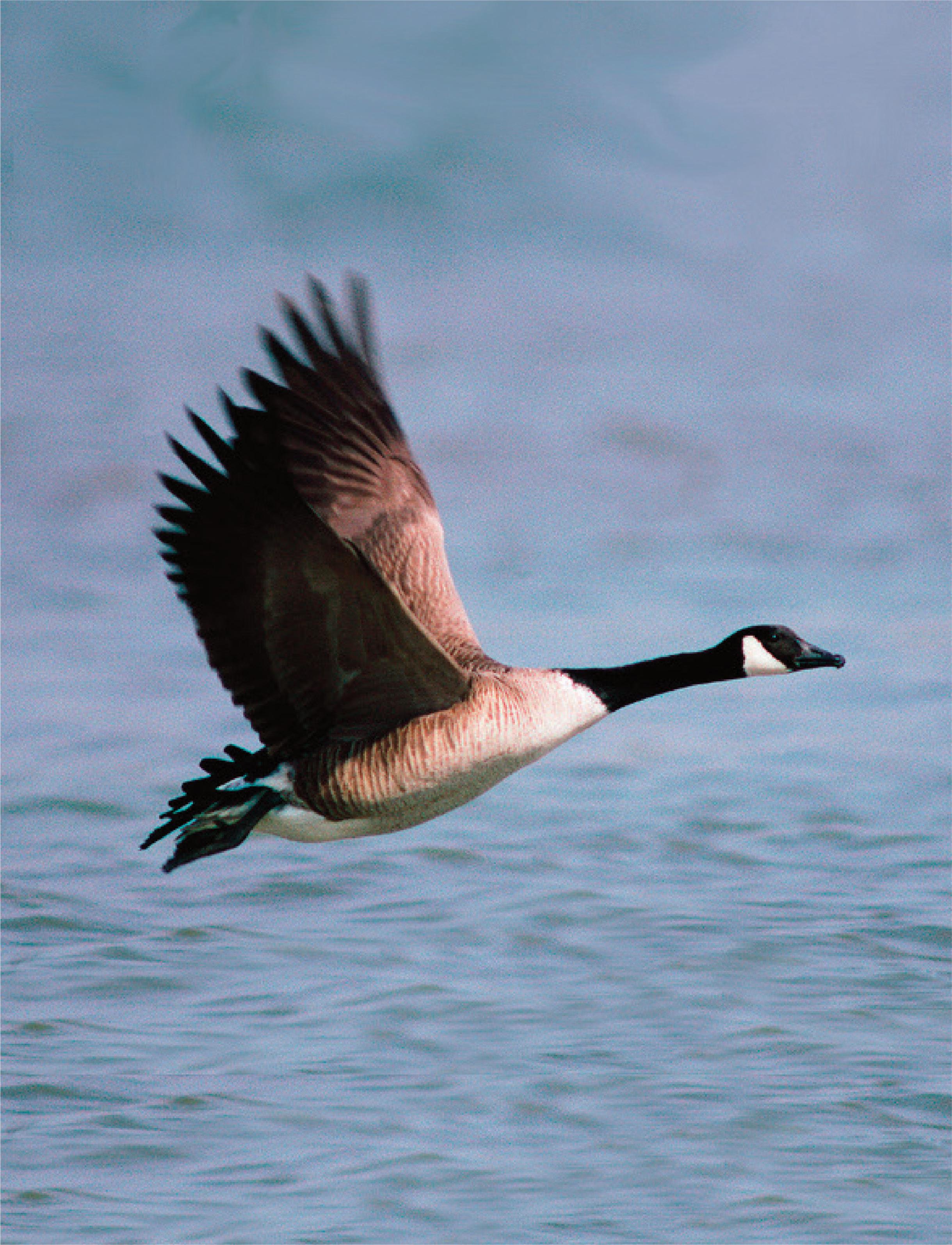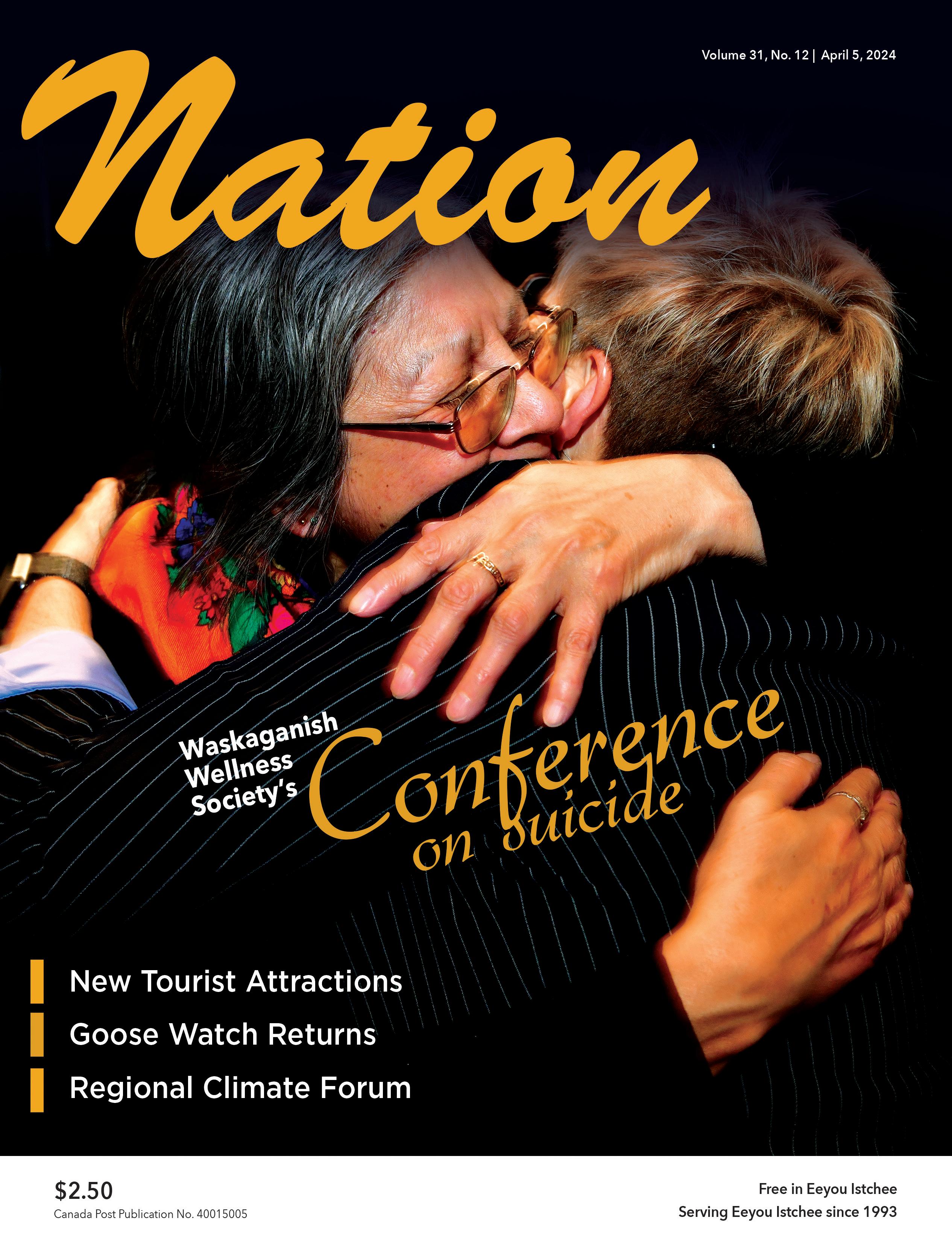








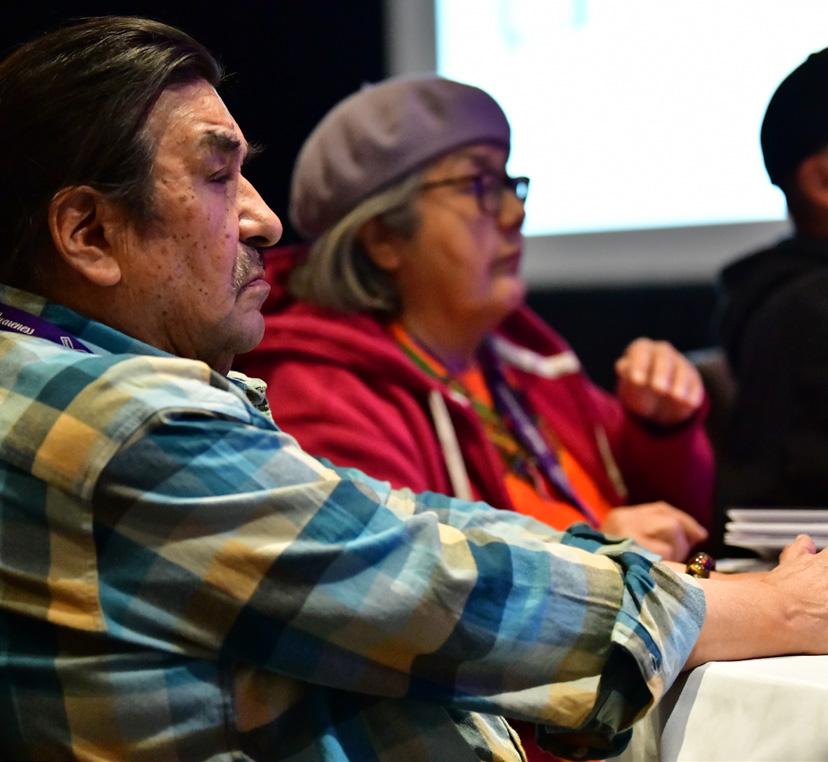
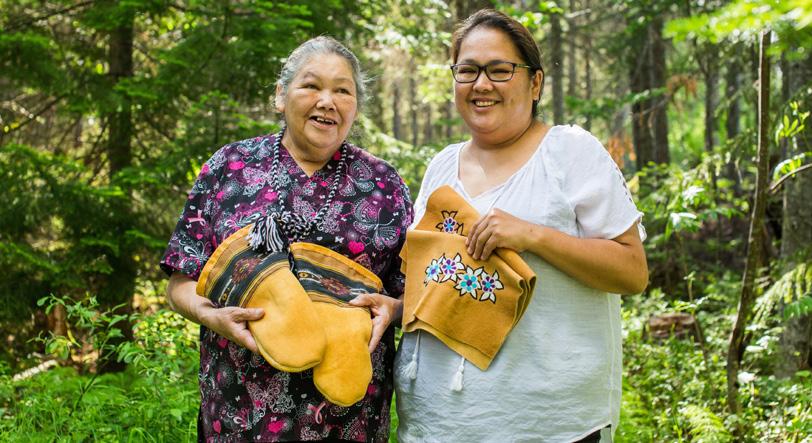




























March was Cree language month. Various people did different things to acknowledge it such as the local Mistissini Cree Language Conference. Cree language has been taught in our schools for many moons now. This is both in the written and spoken forms in Southern and Northern dialects.
The Nation was a part of that in several ways. We published legends and stories with Cree on one side and English on the other. Some schools used them to show translations as well as the writing. At one time, we had an essay contest for students with some of their writing published in the magazine including Cree language submissions in syllabics.
In fact, when the Nation first started, the only Cree font available looked like Courier. No style to it at all. Brian Webb, our Iiyuu editor, designed some impressive fonts. It was important to us as we also did design work and though the initial costs were high it eventually paid for itself. Webb taught himself font design to make this happen.
These days things are better as some technologies have made Cree more accessible in everyday life. Cree Regional Radio is mostly in Cree. Plus, many local Cree radio stations have a high percentage of Cree language programming. JBBCS also has online material like John Bosum teaching Cree colours and how to say them.
Currently, there is a Cree television project in the works. It should be interesting to see how that turns out. Perhaps all those people who were making mini-mov-
ies and posting them will now have a chance to do more and get paid for it.
There are even Cree language books out there and not only for kids. Most Cree organizations have information for the public in three languages: Cree, English and French. You can go online and find internet sites that help you learn to speak or translate Cree. There are Cree government departments that are involved in preserving and promoting the Cree language.
All of this is incredibly important as Indigenous languages are endangered, but Cree is one of the ones that may sur-

vive. Consider that it is predicted that by 2100 almost half the languages spoken in the world today will be gone or next to it.
Though Canada has supported Indigenous languages, funding is set to expire this year and nobody in Ottawa’s hallowed halls is talking about continuing it.
Saving the Cree language may end up becoming more of a grassroots movement in the future. But for now, the future looks rosy for Cree, and we all hope it stays that way. But let’s keep talking about it. And, above all, speaking it.
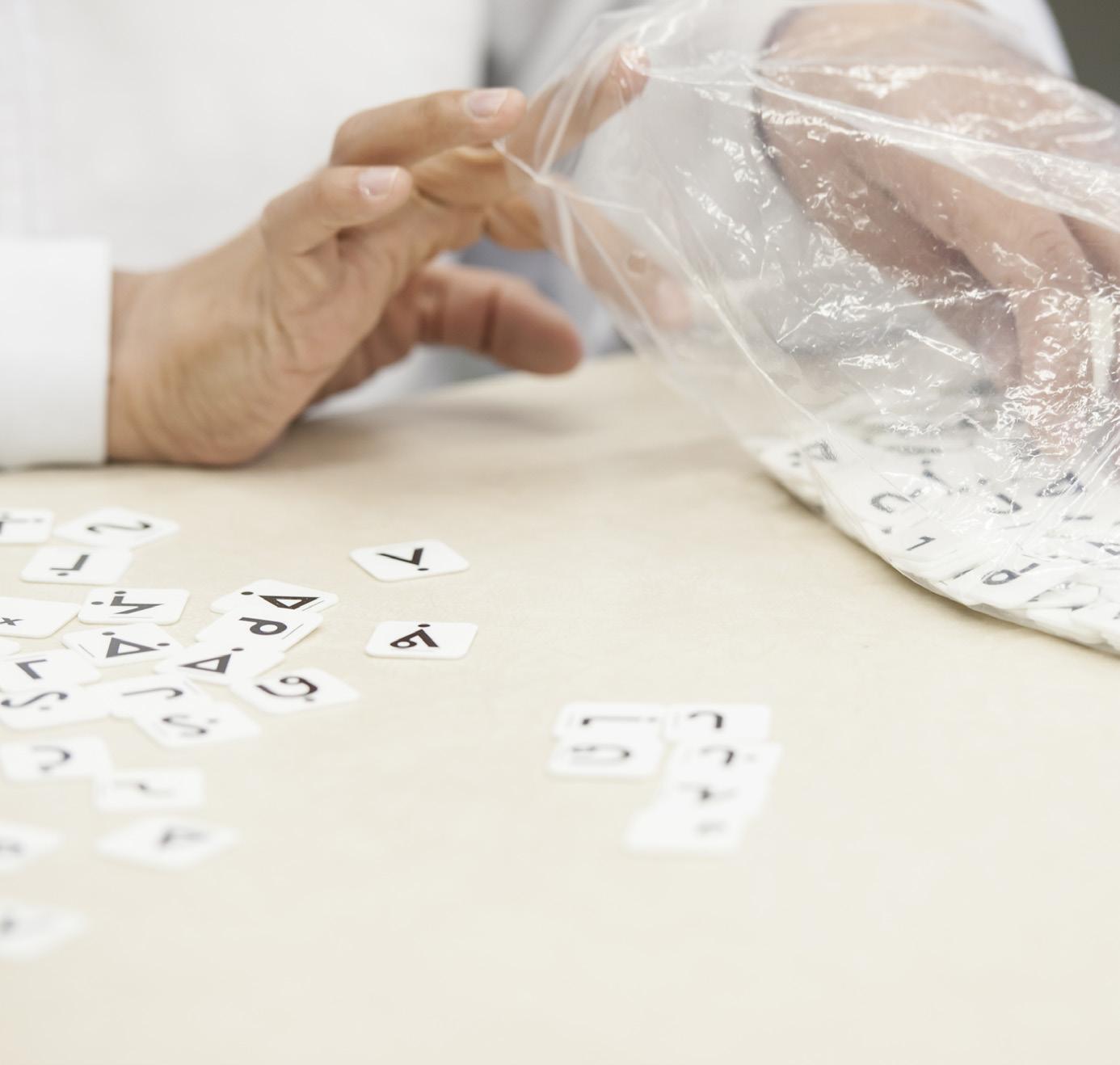



Four Crees from Waswanipi are dead after a pickup truck collided with their medical transport van near Chapais March 21.
Waswanipi Chief Irene Neeposh said her community is in a state of shock. She declared four days of mourning, one for each victim who she described as pillars of the community: van driver Abraham Ottereyes, patients Allan Etapp and Charlie Gull, and Gull’s wife, Cecile Happyjack Gull.
“During this time, let us come together to remember those we have lost and support one another through this difficult period of grief and sorrow,” said Chief Neeposh in a statement. “I ask on all residents to take a moment to reflect on the preciousness of life and to express our sympathies to those who are grieving.”
The Grand Council ordered flags to fly at half-mast to honour those who perished and their grieving families. The tragedy “calls for the solidarity and compassion that the Cree Nation knows so well how to offer,” it said in a statement.
Cree Health Board chair Bertie Wapachee said the van’s passengers were on their way home from the ChibougamauChapais Airport after flying to Montreal to receive healthcare services. A 45-yearold man from Chapais was driving the pickup truck toward Chibougamau at km 338 of Route 113 when he veered out of his lane and hit the van head-on.
All the victims were taken to the Chibougamau hospital, which activated a “code orange” to deploy its crisis unit, their emergency measures coordination centre and a psychosocial intervention team.
Neeposh went to the hospital and credited the staff with doing all they could: “I was very amazed by their work.”
An ambulance from Ouje-Bougoumou went to the accident site to support responders while fire chief Stanley Bosum and emergency services coordinator Jason Coonishish facilitated communication with authorities. CHB medical and psychosocial teams were also mobilized.
Wapachee said the 120-kilometre journey from the airport to the community can be dangerous and that roads were snowy, slushy and possibly icy on the day of the accident. Describing Route 113 as “probably one of the worst highways in the province,” Wapachee called on Quebec’s Transport Ministry to upgrade the highway to improve safety for patients.
“If the roads aren’t good, not maintained, it adds more risk to our patients,” said Wapachee, adding one of the victims was a dialysis patient. “It’s a risky place to be on dialysis.”
Ottereyes was an experienced driver for the health board and was also involved with Waswanipi’s Elders department. He enjoyed drumming with his brothers Charlie and Norman as Washeshkun at powwows throughout the region and was an inspirational mentor at workshops for the younger generation.
In 2000, Ottereyes was one of seven walkers who completed a journey through each Cree community from Whapmagoustui to Mistissini to spread awareness about the need for kidney dialysis clinics closer to home. They received awards at the official opening of a dialysis clinic with five hemo-dialysis machines in Chibougamau.
Etapp was a beloved pastor in Waswanipi who retired in 2021 after 32 years. His cousin Kenny Blacksmith recalled their close relationship growing up and attending La Tuque Indian Residential School together before both became involved in ministry. They flew back from their patient appointments in Montreal together and had just been reminiscing about their life experiences.
“Allan had expressed his past, dreams, and hopes,” Blacksmith shared. “I had told him, ‘God has everything in control. There is always something better.’ But I didn’t know those few days with him would be our last time together. We just never know do we?”
Etapp had visited his grandsons, Dawson College students Thomas and Isaac Andrew, in Montreal before return-
ing north. Isaac Andrew Etapp said he was initially supposed to accompany him to Waswanipi before his grandfather changed his mind and asked him to stay in the city.
Cecile Gull worked as a cashier for many years in small businesses and her husband Charlie was a respected carpenter who helped build countless houses in the community. Irene Mianscum said both of them had a “great big heart”.
“When people needed help, they were ready to help out,” said Mianscum.
Chief Neeposh said all four were “instrumental in the building of our community” and the loss is affecting everyone personally. She told the Nation that both Etapp and Ottereyes brought “spiritual strength” to Waswanipi in different ways.
Amid an outpouring of condolences have been renewed calls for better healthcare access in the region. Wapachee explained construction is expected to begin soon to expand the Waswanipi clinic with a dialysis unit. While Neeposh is pleased that their request to have local hemodialysis is being expedited, she said community members often need to commute for other medical conditions.
“It’s not easy as it is and I worry about my members who have to continue to commute, the added stress from this accident that it might leave them with,” said Neeposh. “We need to be a more open to telehealth and reduce the amount of time our patients spend on the roads.”
To conclude the four days of mourning on March 25, the community came together for a candlelight vigil in a profound expression of love and solidarity. Neeposh said the idea came from youth who felt helpless following the tragedy and she was moved to witness their participation.
“Sometimes we think they’re disengaged but they do care,” Neeposh said. “Unfortunately, it is often through tragic times that we are able to see the strong sense of community. It tightens the bond of the community.”
Geese are coming home early. Some didn’t venture far this winter, which wasn’t much of one according to every available metric. Still-smouldering zombie fires and reduced snow are already concerning land users as the wildfire season approaches.
Almost each month is breaking temperature records and there are signs that wildlife are struggling to adapt. Climate change is a clear and present danger for the Cree Nation, and it’s responding with a new unit to navigate emerging climate threats.
“We’re just building the team,” said Olivier Kölmel, CNG’s climate change manager hired in September. “It’s a priority issue for the Grand Chief since the start of her mandate. The focus is supporting communities on their initiatives, put in an action plan for the governments and work on a regional adaptation plan.”
A key initiative for Kölmel’s team is the Cree Regional Climate Forum to be held in Ouje-Bougoumou April 9-11, following a pilot forum held in 2018.
“The workshops and discussions are all about empowering communities, defining climate leadership and adaptation planning,” explained Kölmel. “The first day we’ll have a panel on forest fires with federal and CNG representatives. That’s top of mind for most folks.”
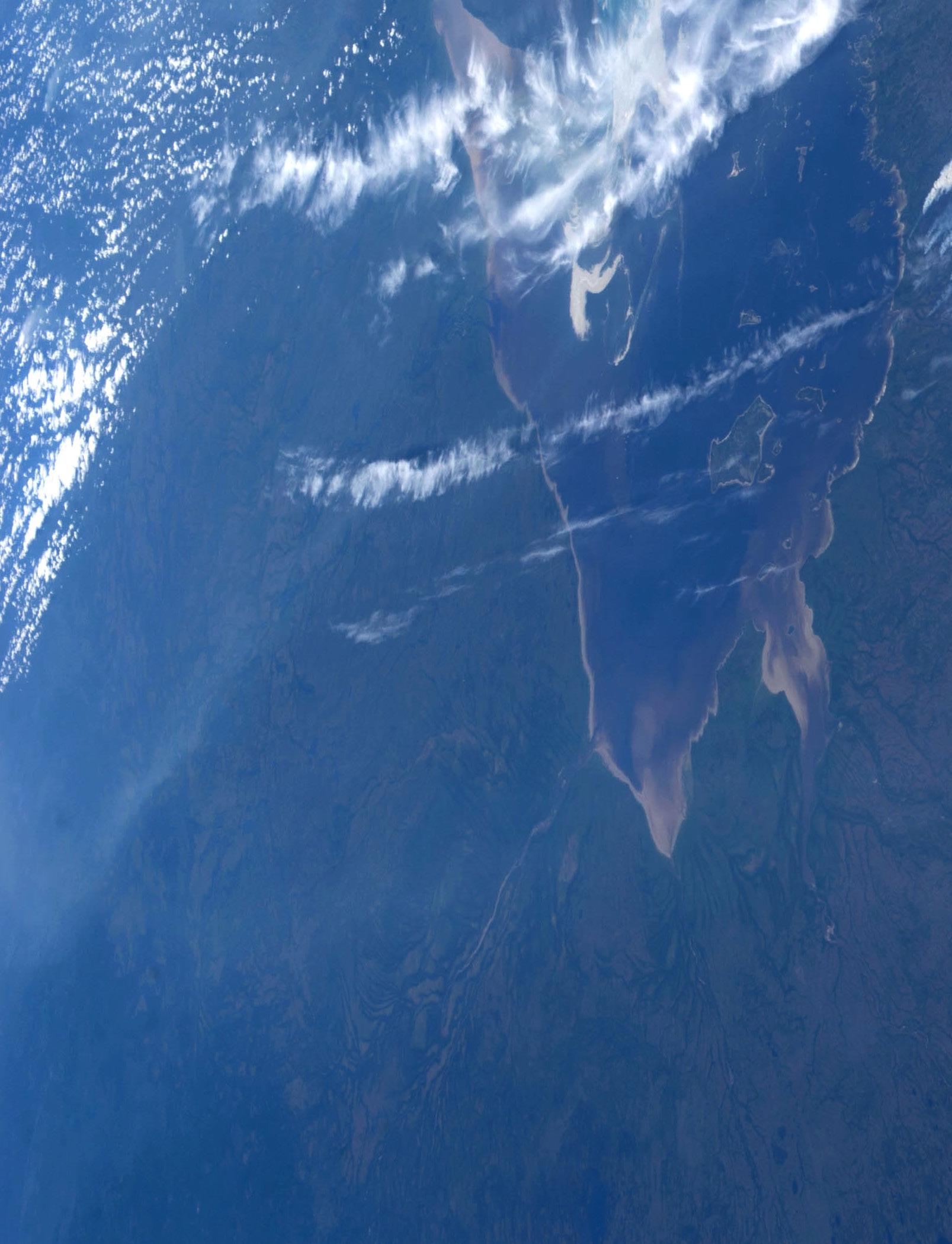
Quebec’s forest fire protection agency, SOPFEU, issued its earliest-ever first warning of the season at the beginning of March. Above-normal temperatures are expected to continue through the spring, creating dryer vegetation that can quickly spread a fire. SOPFEU is expanding its workforce and will be ready to hit the ground earlier than usual.
Western Canada’s wildfire season has already begun, with most of the 154 active fires holdovers from last year. Blazes simmering below the surface, sometimes called overwintering or zombie fires, are rare in Quebec but Cree land users are on the lookout.
“I saw on Facebook there was smoke coming out from under the snow in the Mistissini area,” said Lee-Roy Blacksmith, the Cree Nation’s regional fire marshal. “We’ll wait for land users notifying us if they’re seeing smoke during the springtime while people do their Goose Break hunts.”
Blacksmith recently addressed the Grand Council about concerns over diminished snow and swiftly thawing rivers and lakes. He works with SOPFEU and Indigenous Services Canada to ensure more community members are trained to fight forest fires and that they will have the same equipment as SOPFEU.
While Cree people from five communities were trained during last summer’s
hectic fire season, 25 people from each of the four remaining communities will begin training in late May when melted lakes provide a reliable water source.
“Our main priority is to help SOPFEU and be the first responders when we start seeing fires around the communities instead of waiting for SOPFEU to come,” Blacksmith told the Nation. “We’ll get out there and try to maintain as much as we can.”
As communities complete their reports summarizing local impacts from last year’s fires, they’re also preparing emergency measures plans. Evacuation lists need to be updated to ensure that emergency team members aren’t required to leave due to medical issues or to care for children or grandchildren.
At the climate forum, Blacksmith will discuss progress on prevention measures and emerging initiatives. He said effectiveness substantially improved after a regional core group was established midway through last summer to facilitate communication and align responses between communities and external agencies.
Over 100 participants representing all 11 Cree Nations are expected at the forum. Day one will take stock of the current situation, day two will look forward at adaptation planning and day three will
focus on governance and climate leadership.
The 2018 forum in Eastmain drew stakeholders from numerous entities from Cree, federal and provincial governments as well as researchers from McGill University and UQAT. Participants highlighted that climate change was disturbing hunting activities, impacting cultural transmissions to younger generations and impacting housing, water and food quality.
A new report emphasizes the leadership role of Indigenous communities in mitigation approaches. The “Indigenous Resilience Report” is the first comprehensive survey of climate change impacts from the perspective of First Nations, Inuit and Métis people.
Arguing for a re-framing of the climate crisis as consumer society’s disruption of the natural balance of life, Anishinaabe Elder Dave Courchene-baa states that “it is because of how we have behaved as human beings that we have to feel the impact of what we have done to the Earth.”
Climate change is viewed as an interrelated crisis affecting Indigenous peoples, exacerbating other colonialism impacts like the infrastructure gap. The report’s Indigenous authors contend that their peoples’ deep connection with the land should be leveraged to assess envi-
ronmental changes and develop holistic responses.
Research shows that Canada is warming at twice the global average and the Arctic three times faster. Another report about Quebec’s 2023 wildfire season calls for a comprehensive risk-management approach that includes new fire suppression strategies and industrial logging methods that support forest resilience.
Although the province’s overall precipitation was near historic levels, Eeyou Istchee experienced an unusual deficit, while average temperatures were threeto-five degrees above normal. Suggesting that timber harvest rates may be too high to sustain a steady supply, the analysis proposes creating precautionary forest reserves.
The study stated that further global warming could mean up to a five-fold increase in the area burned each year by century’s end. With over 250 bush cabins burned in Eeyou Istchee last summer, the Cree Nation is planning a public education campaign on safety measures.
“The majority of the fire chiefs and public safety officers took the fire smart program this fall,” said Blacksmith. “There was too much flammable vegetation around the camps. We’ll promote how to have fire-resistant camps before the summer season.”
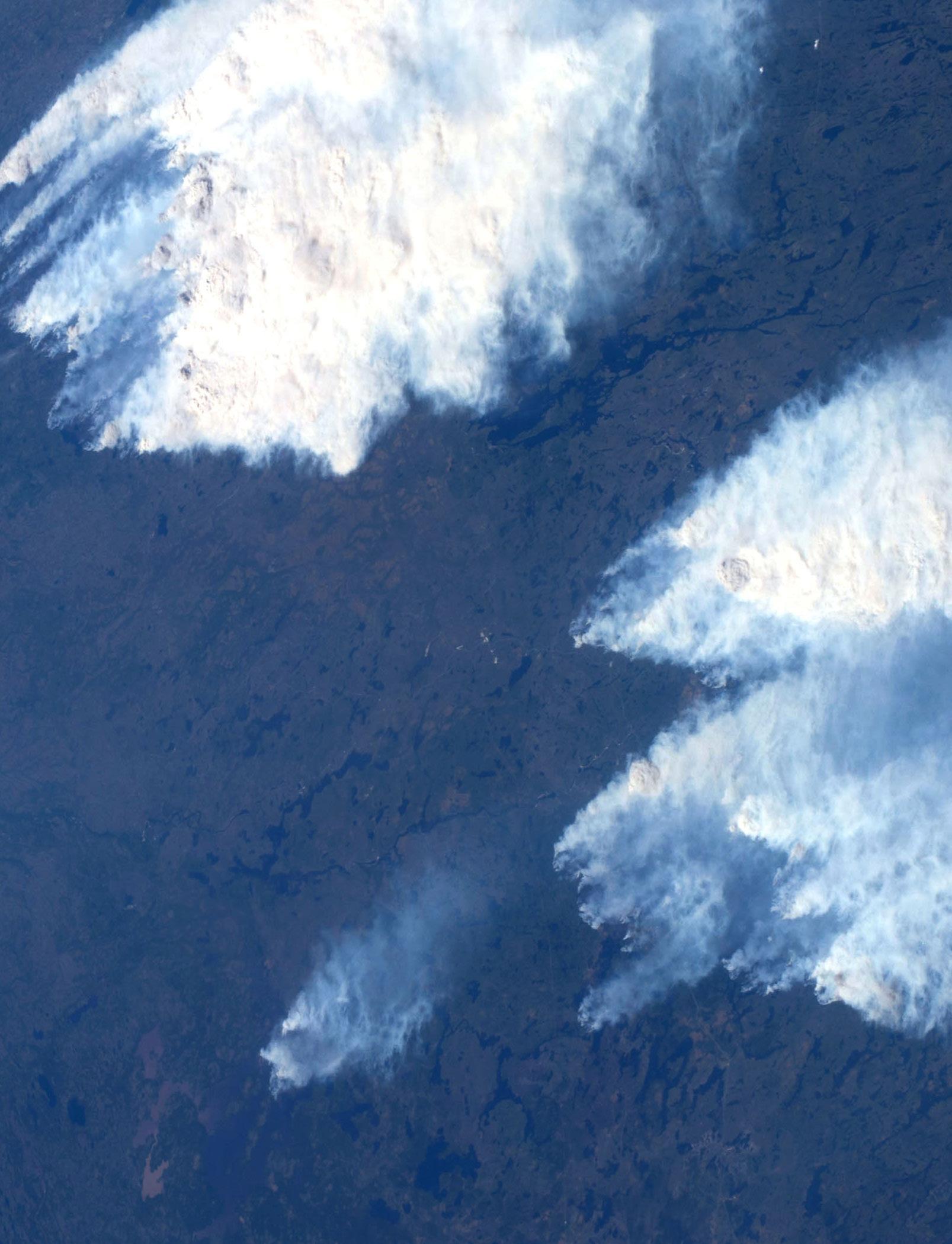
“Our main priority is to help SOPFEU and be the first responders when we start seeing fires around the communities instead of waiting for SOPFEU to come”
- Lee-Roy Blacksmith, Cree Nation’s regional fire marshal.
The Nation & Beesum extend sincere condolences to the families, friends and loved ones of the Community of Waswanipi.
Caring thoughts and prayers are with you during this difficult time.
With heartfelt sympathy!

ouwahstore@gmail.com
www.ouwahstore.com


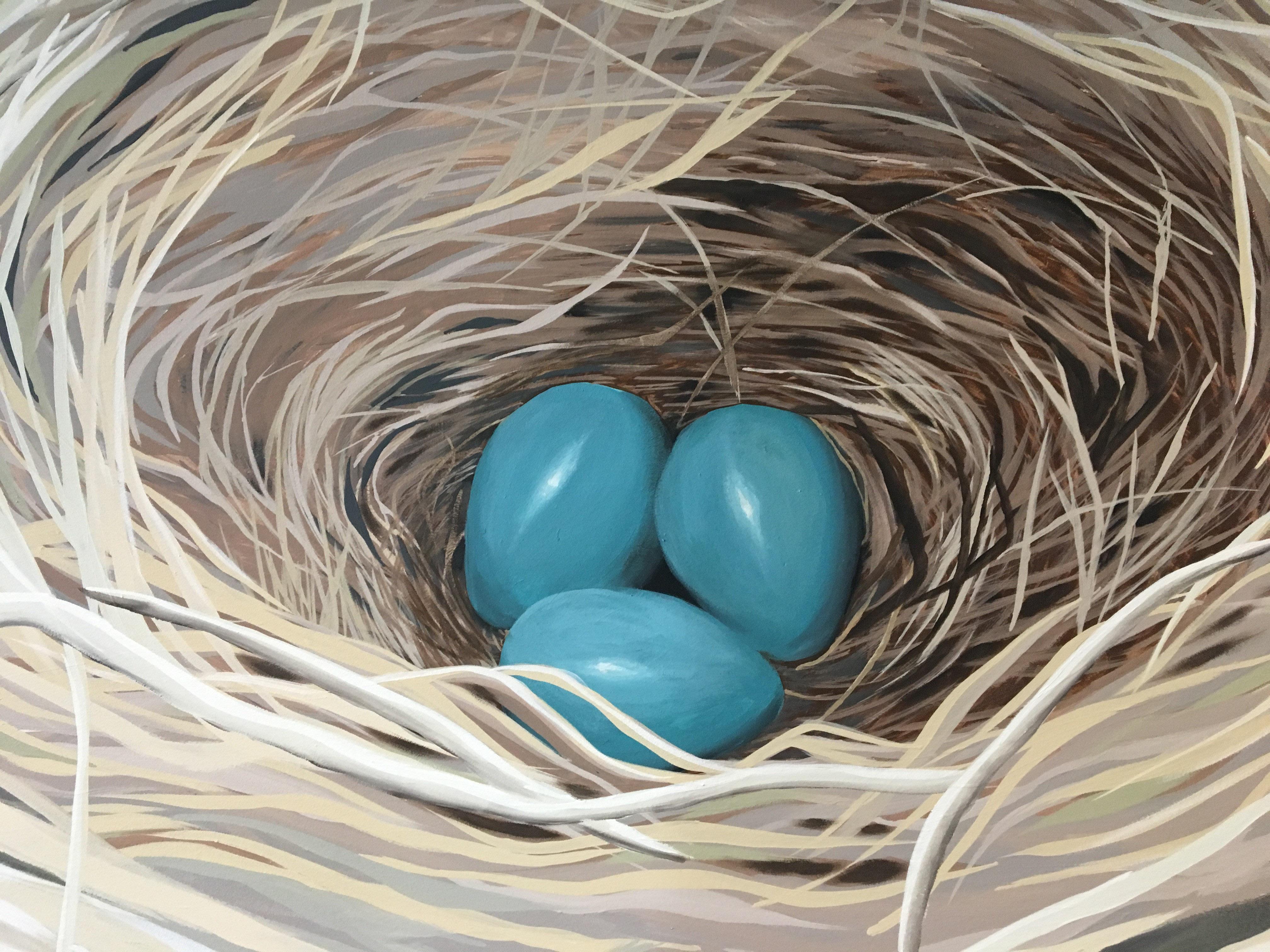
For women and children of Eeyou Istchee suffering from domestic violence

Toll Free | Open 24/7
creehealth.org/services/womens-shelters-robins-net
Pîpîchâu Uchishtûn | Robin’s Nest | Women’s Shelter
If you are an Indigenous woman of Eeyou Istchee and you are seeking safety and support, we are here to help you!
If you need emotional support or to learn about all the services available to you, please contact us: 1

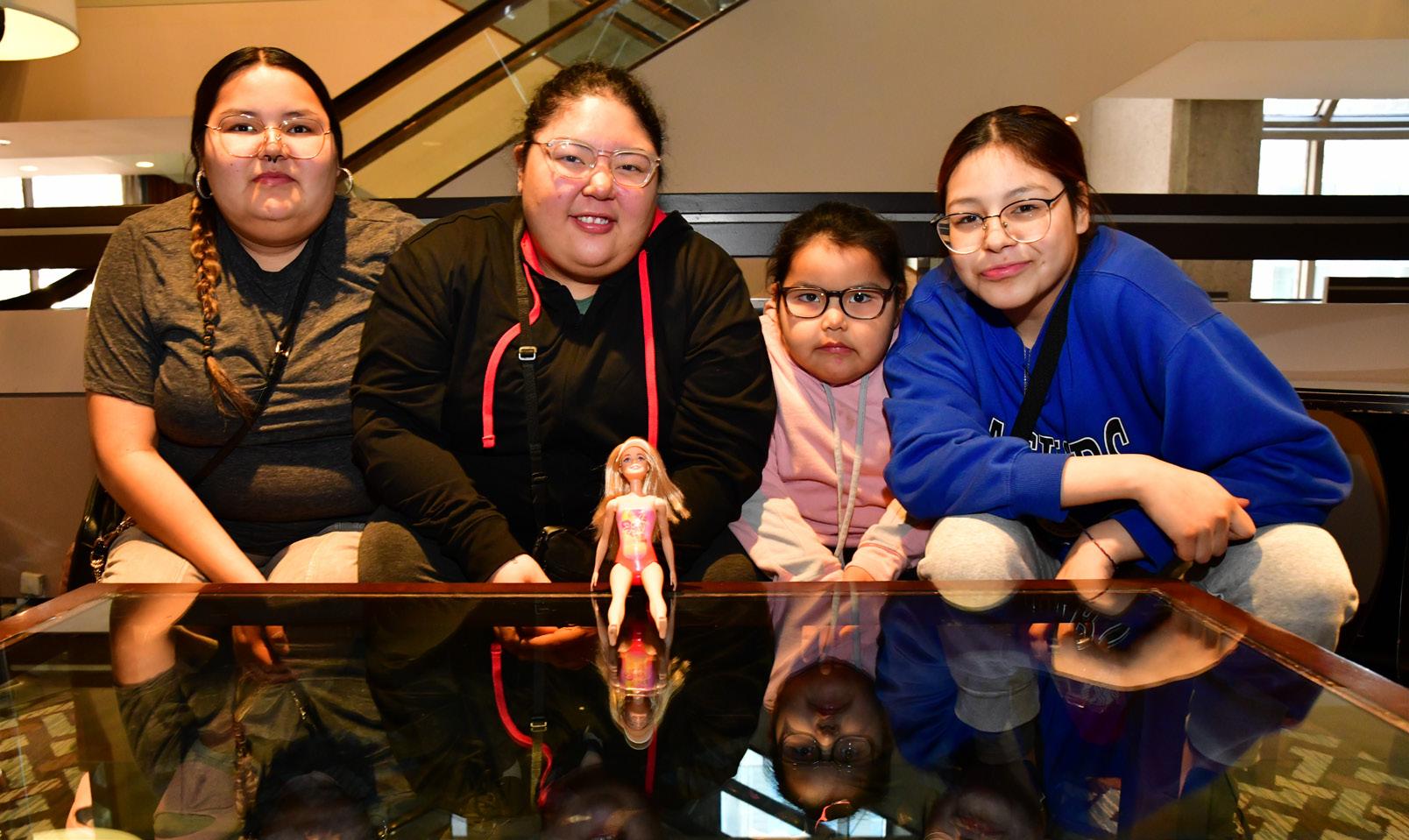
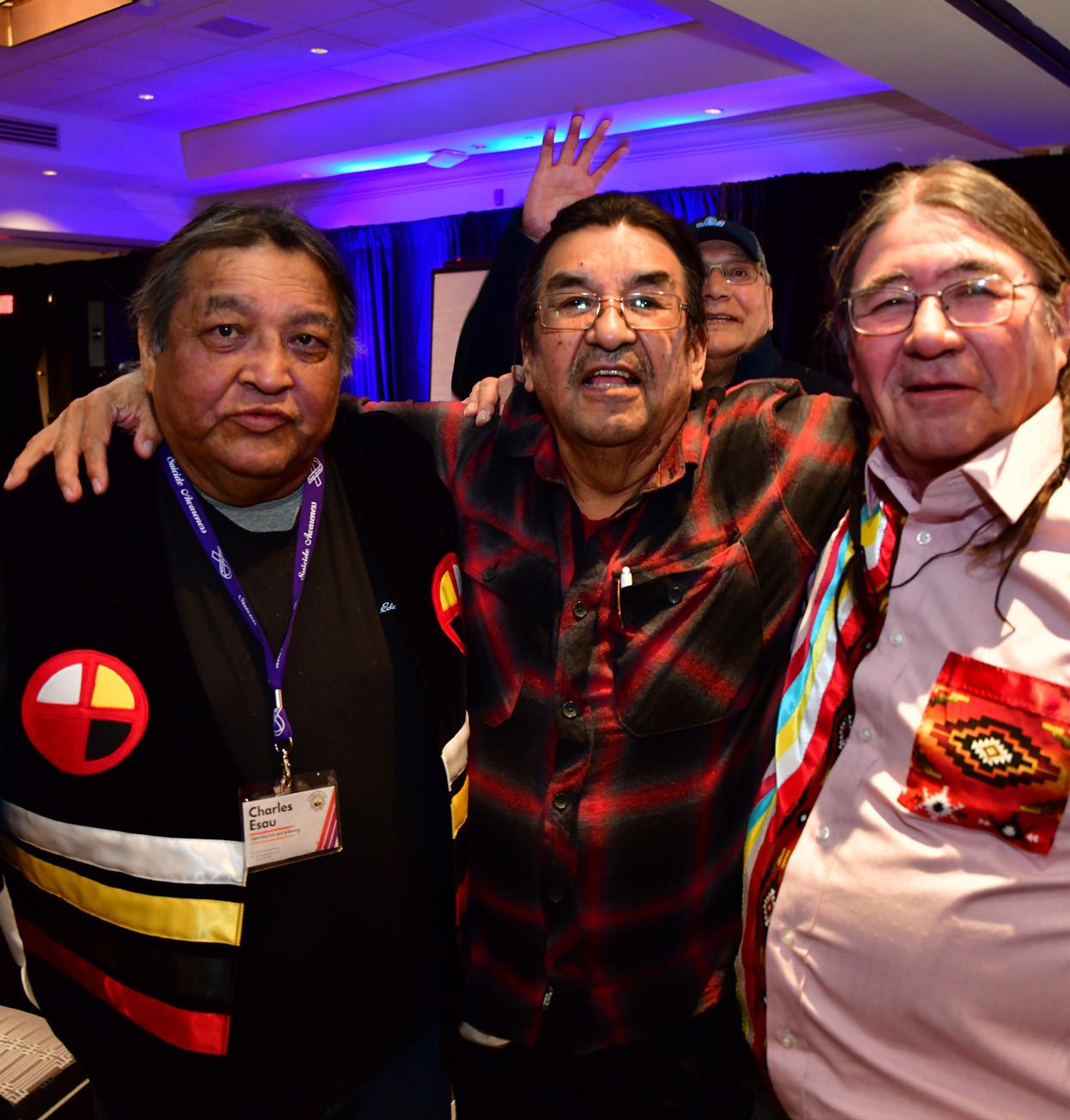
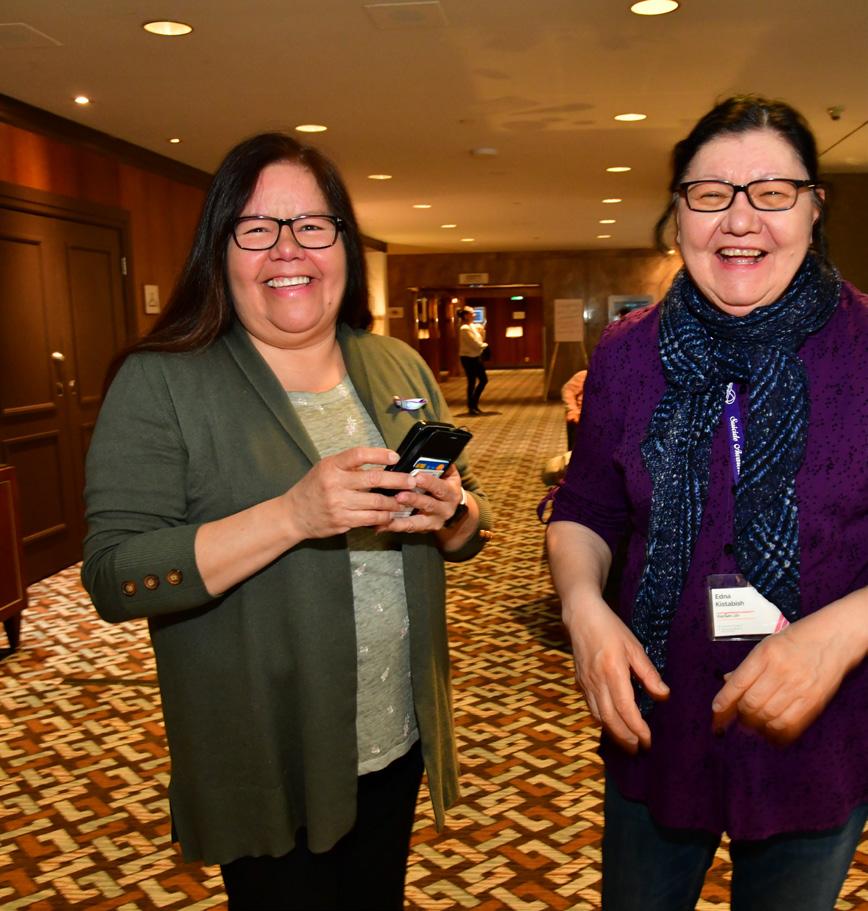
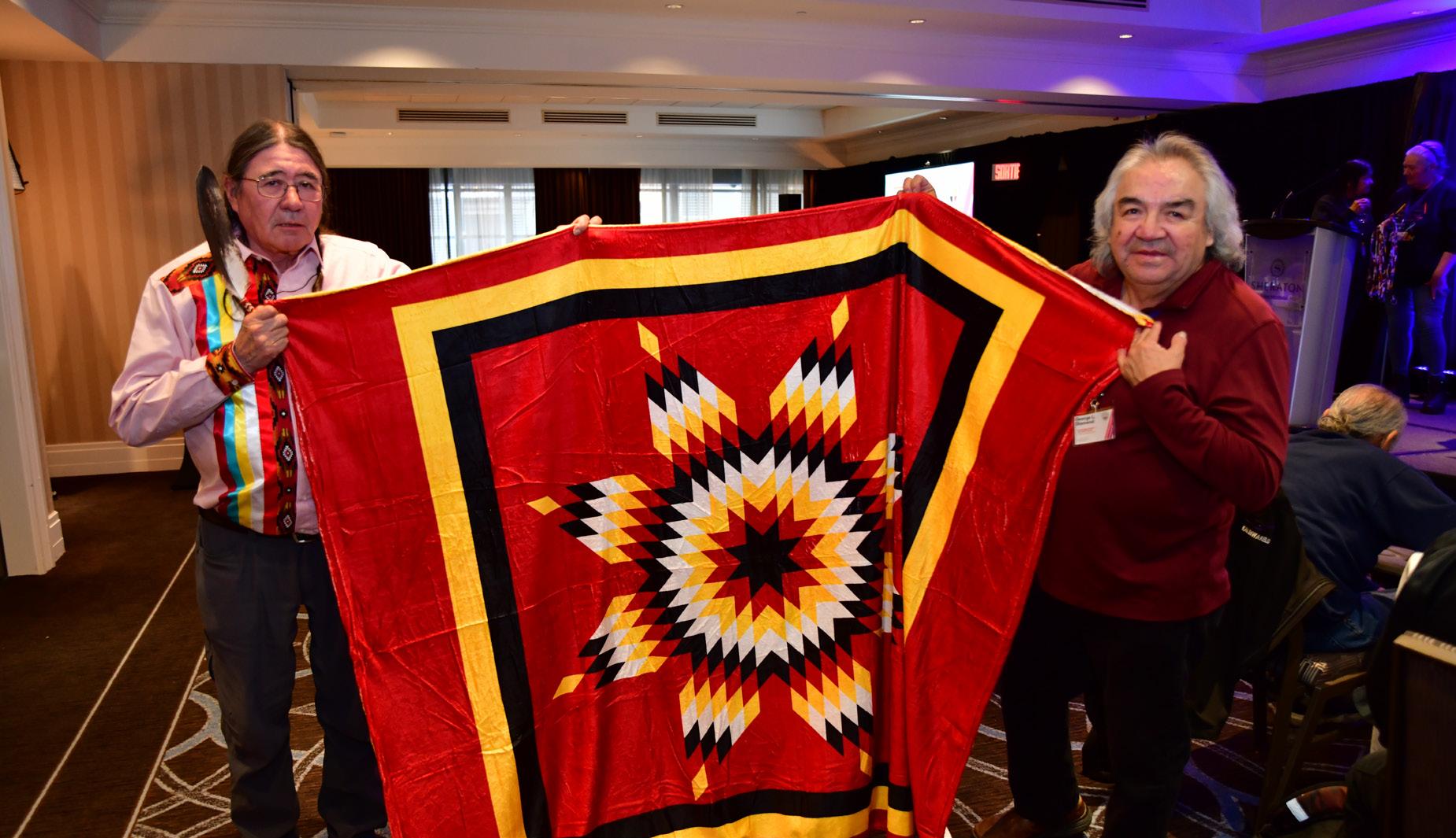
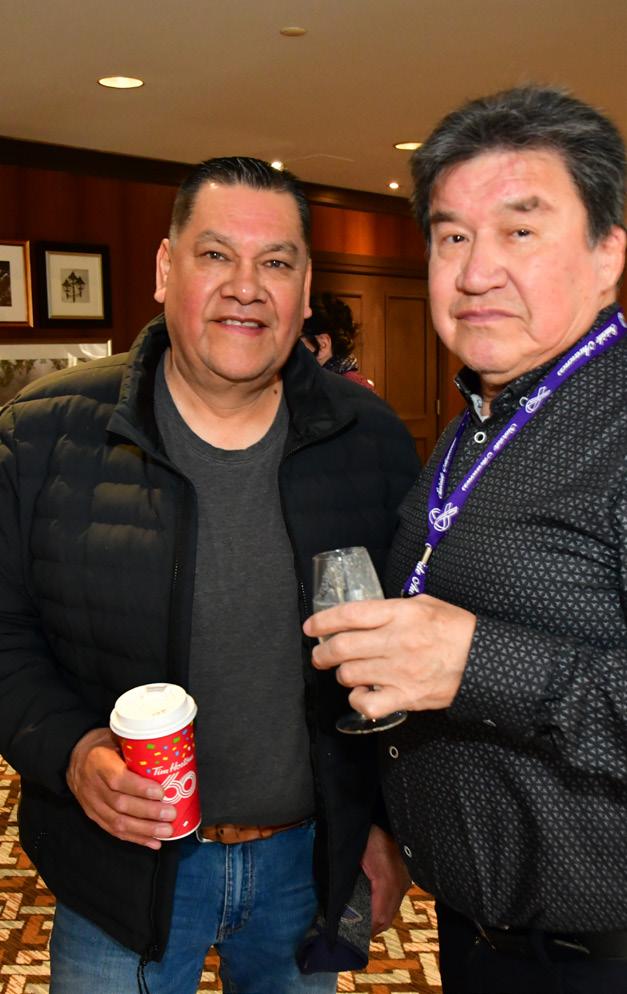

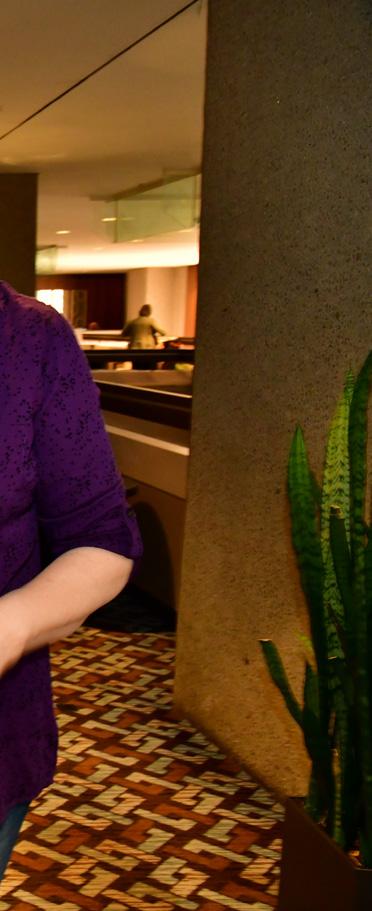
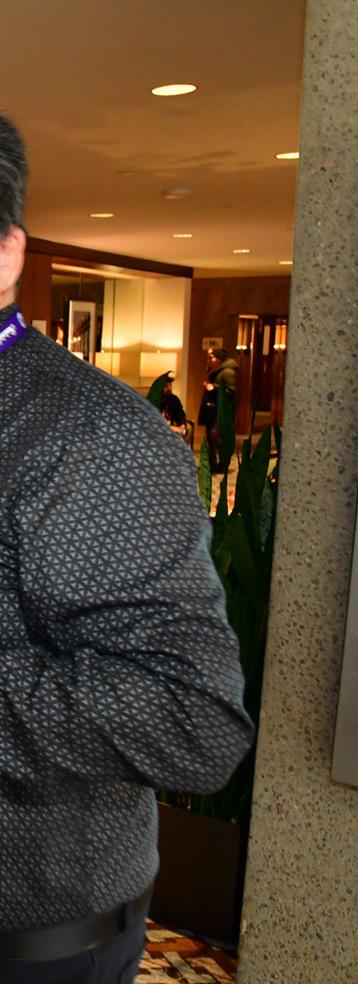
March 13-15 | Sheraton Centre
by Nation Staff | Photos by Neil Diamond
Laughter rang out and tears, happy and sad, flowed at the Waskaganish Wellness Society’s conference on suicide this past March. The event took place at the Sheraton Hotel’s swanky downtown Montreal complex and was attended by Eeyou, Innu, Anishnabe, Mohawk, Cayuga and Oneida from across Canada. There were presentations and workshops by Indigenous mental health professionals. Painful stories were shared by several attendees who had experienced the trauma of suicide, incest and violence which moved many in the audience to tears.
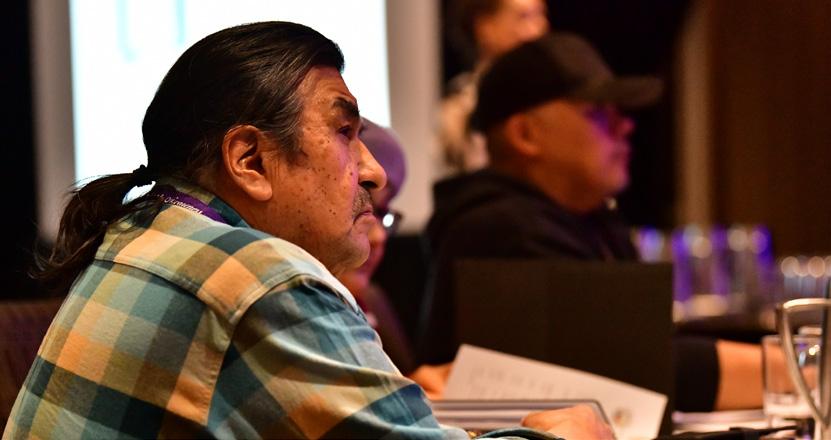
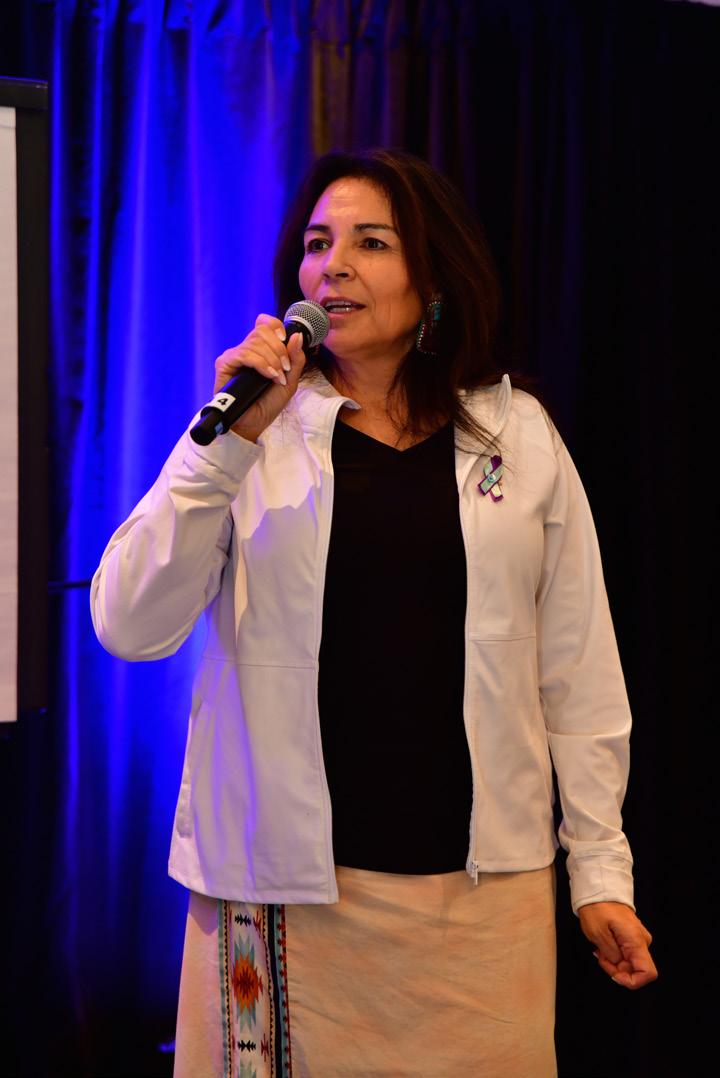

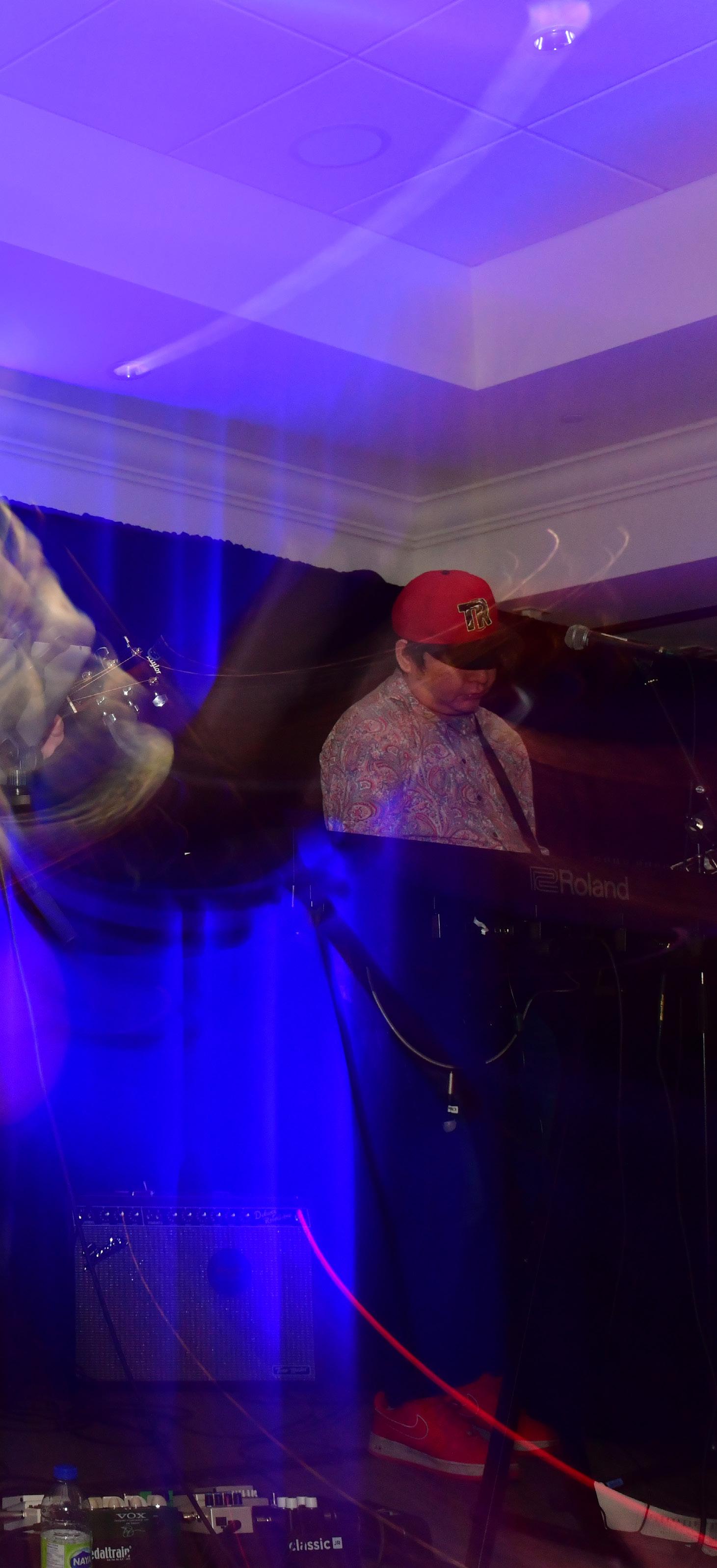
But it was not all doom and gloom. During the banquet on Thursday evening the hungry crowd was entertained by Nashville’s Dave Fenley. Fenley’s claim to fame is having appeared on America’s Got Talent and The Voice. Chisasibi’s own Cree Rising also performed versions from U2’s catalogue as well aa Paul Napash’s original compostions. Two members of Cree Rising’s members could not make the trip to Montreal so John Henry Wapachee filled in “slappin’ da bess.”
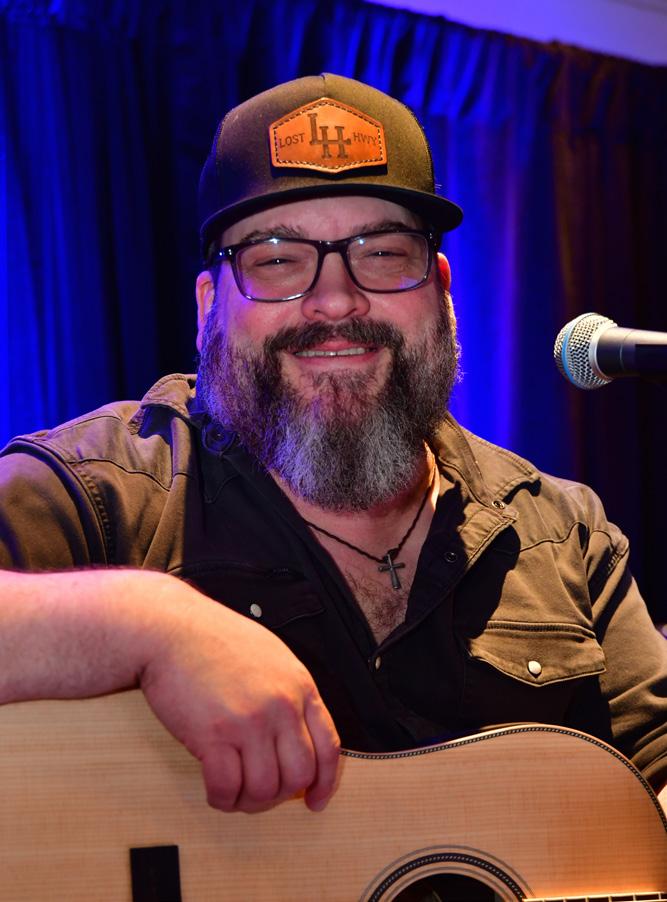
Texas singer song writer Dave Fenley travelled from Nashville Tennessee to entertain the gathering. He performed old favourites like Stand By Me, Into The Mystic and his own compostions to a very appreciative audience.
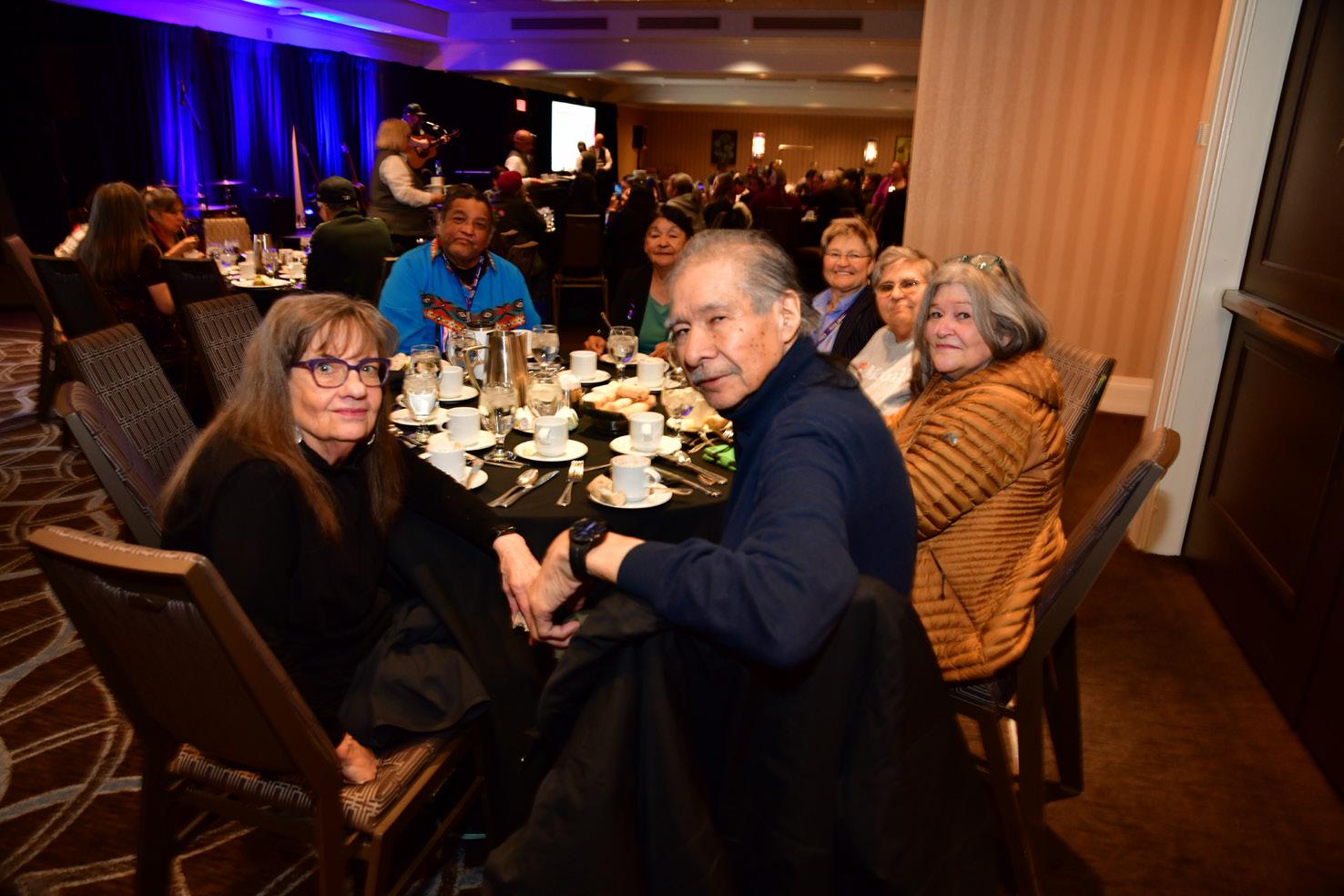
Former Grand Chief Matthew Mukash made an appearance. To his left is author, lecturer Jane Middleton Moz.

Hours before a frightening episode occurred when the translator for the Obedjiwan delegation announced that his 19-year-old daughter had been missing for several hours. The young woman had been last heard from on a Snapchat post in the company of strangers somewhere in the city. Fortunately there were several women in attendance who were involved in the Missing and Murdered Indigenous Women (MMIW) movement who advised the distraught young father on what to do. The following day the young woman had been tracked down by the father and the police through her mobile phone.
Middleton Moz is known internationally for her work in the areas of adult children of alcoholics, multi-generational grief in individuals and families, multi-generational sexual and physical abuse in families.
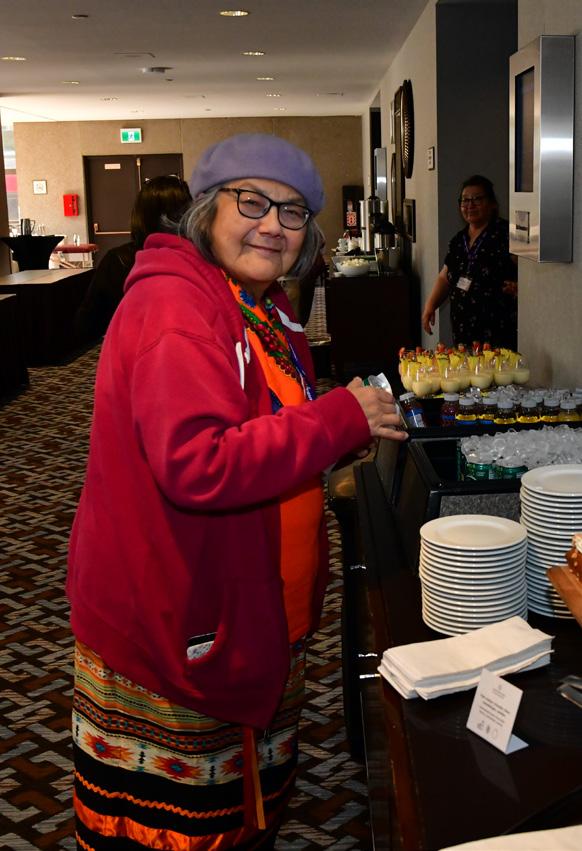
Oneida Elder Bruce Elijah was this gathering’s special guest speaker. Elijah is Elderin-Residence at Western University’s Wampum Learning Lodge. He hails from the Oneida of the Thames First Nation near London, Ontario.
Daisy Bearskin of Chisasibi filling up with more energy after an emotional, tiring morning. Daisy took to the stage with her son Gabriel to share a painful experience from their past.
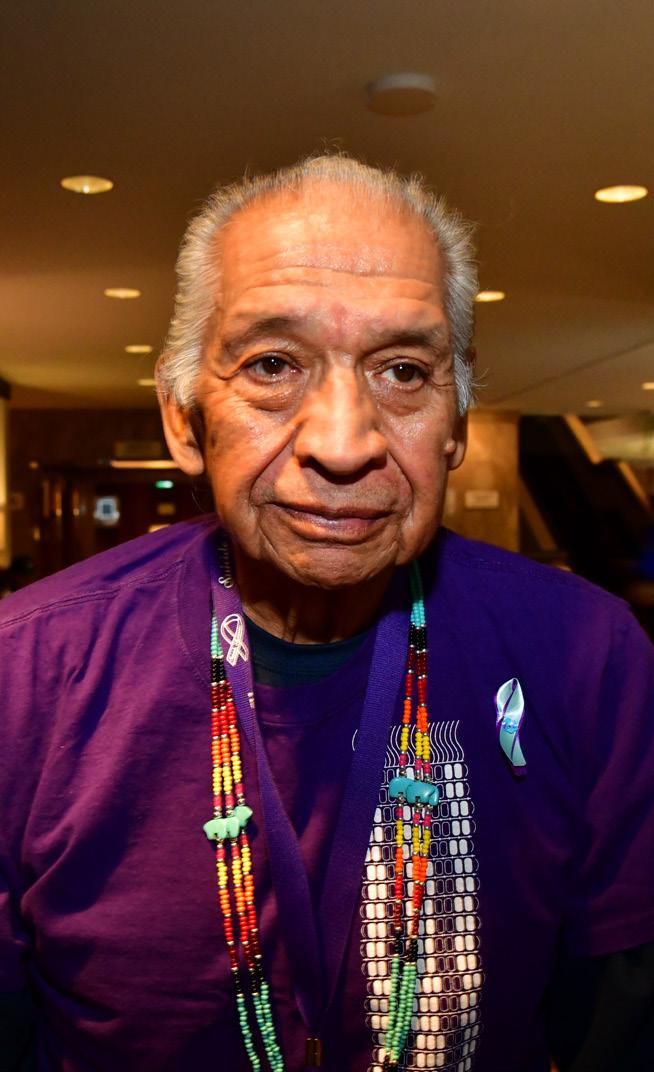


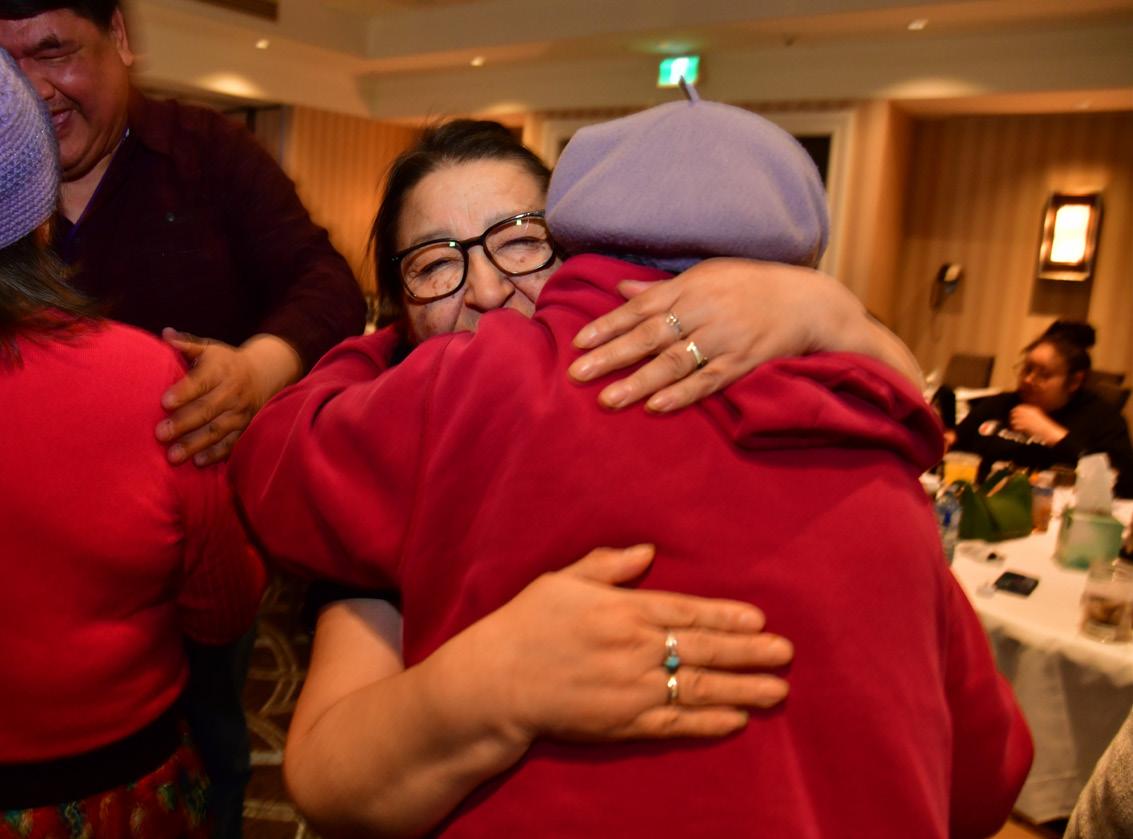
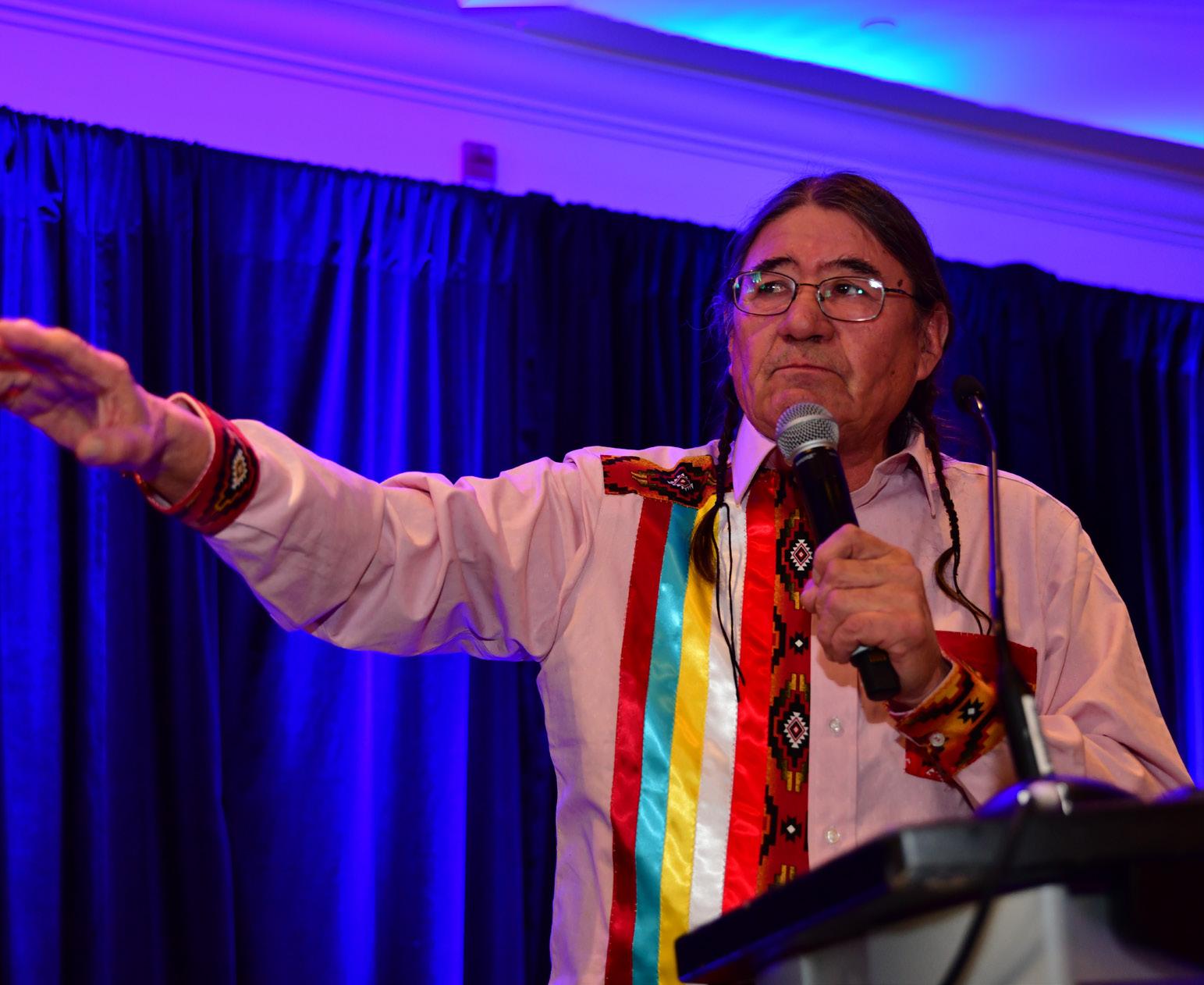
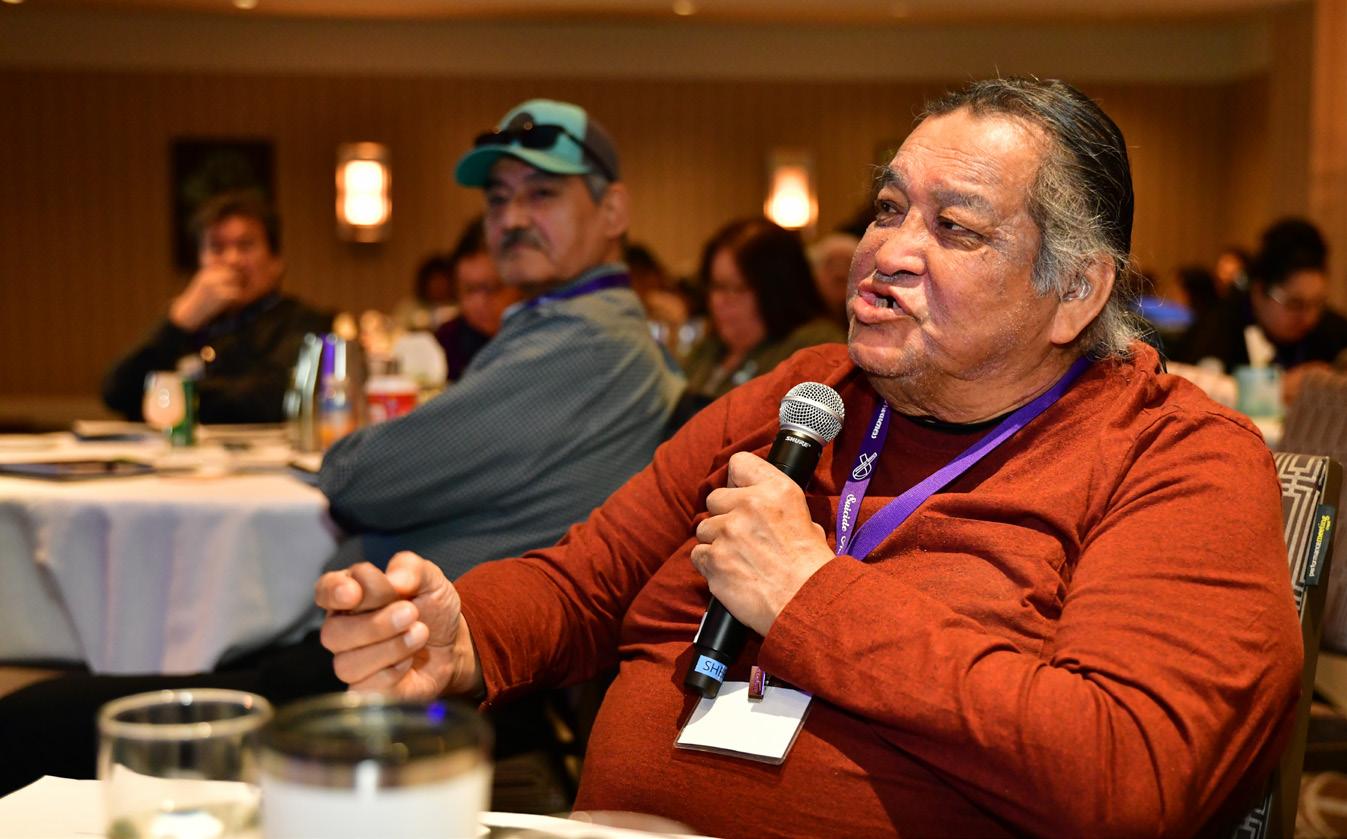
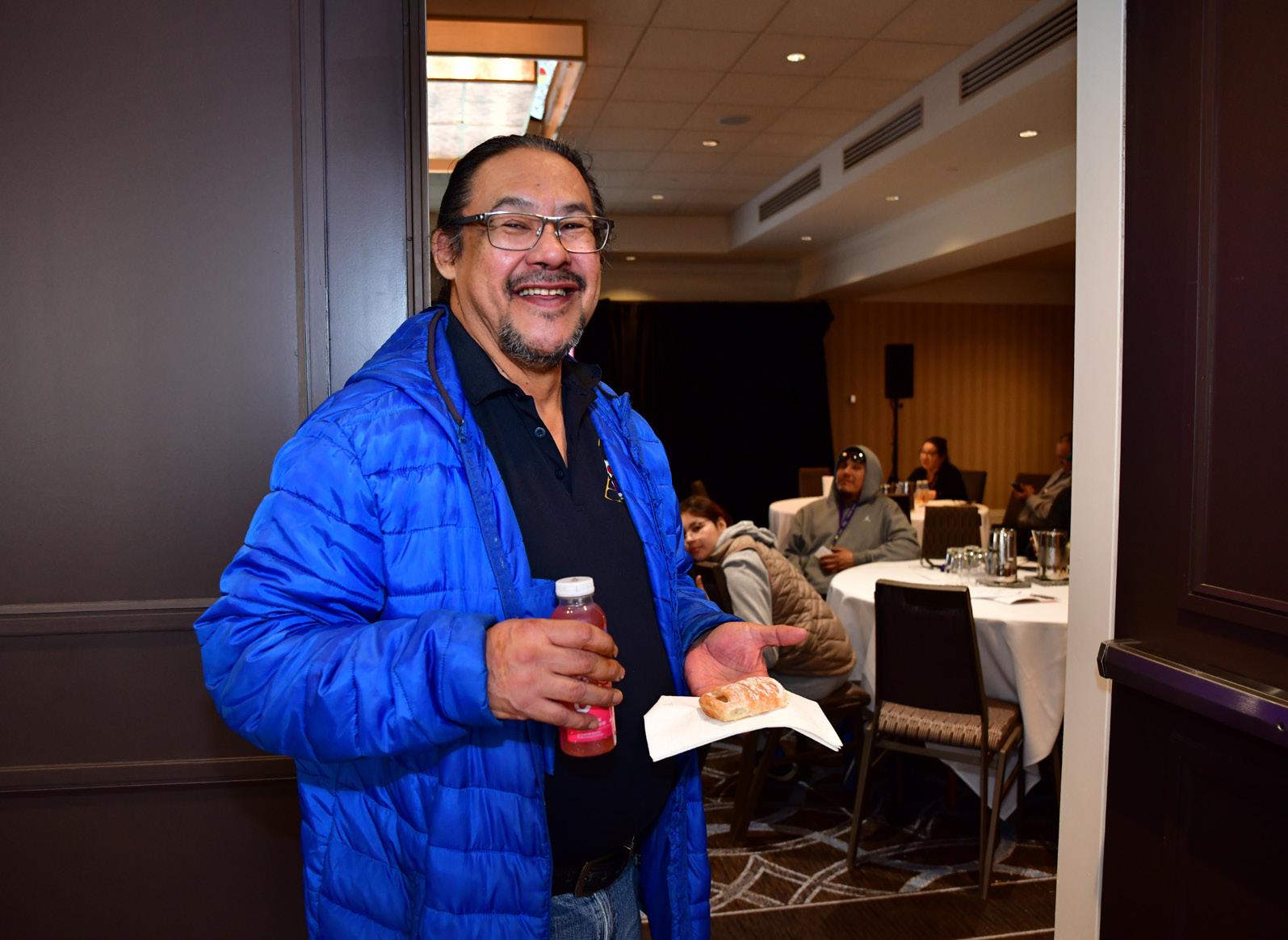
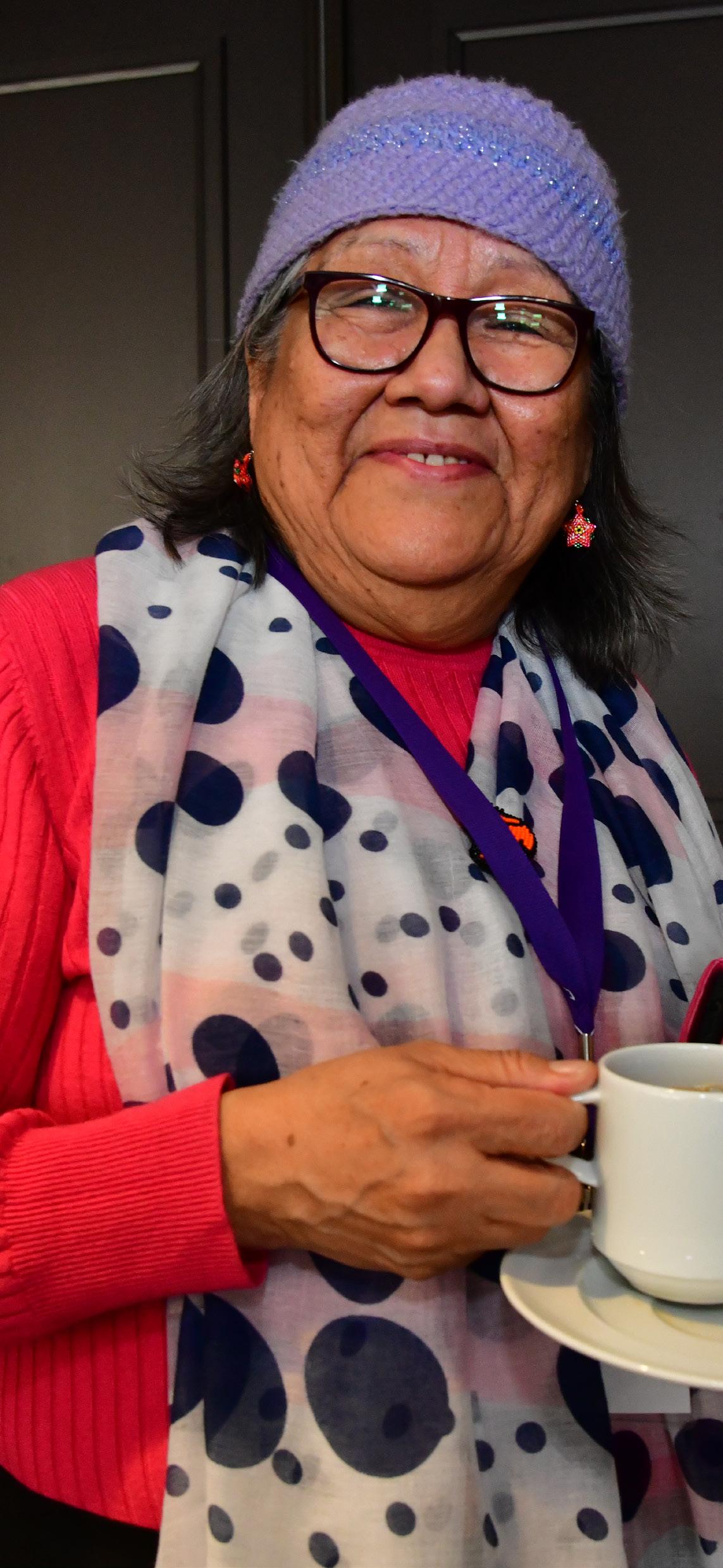
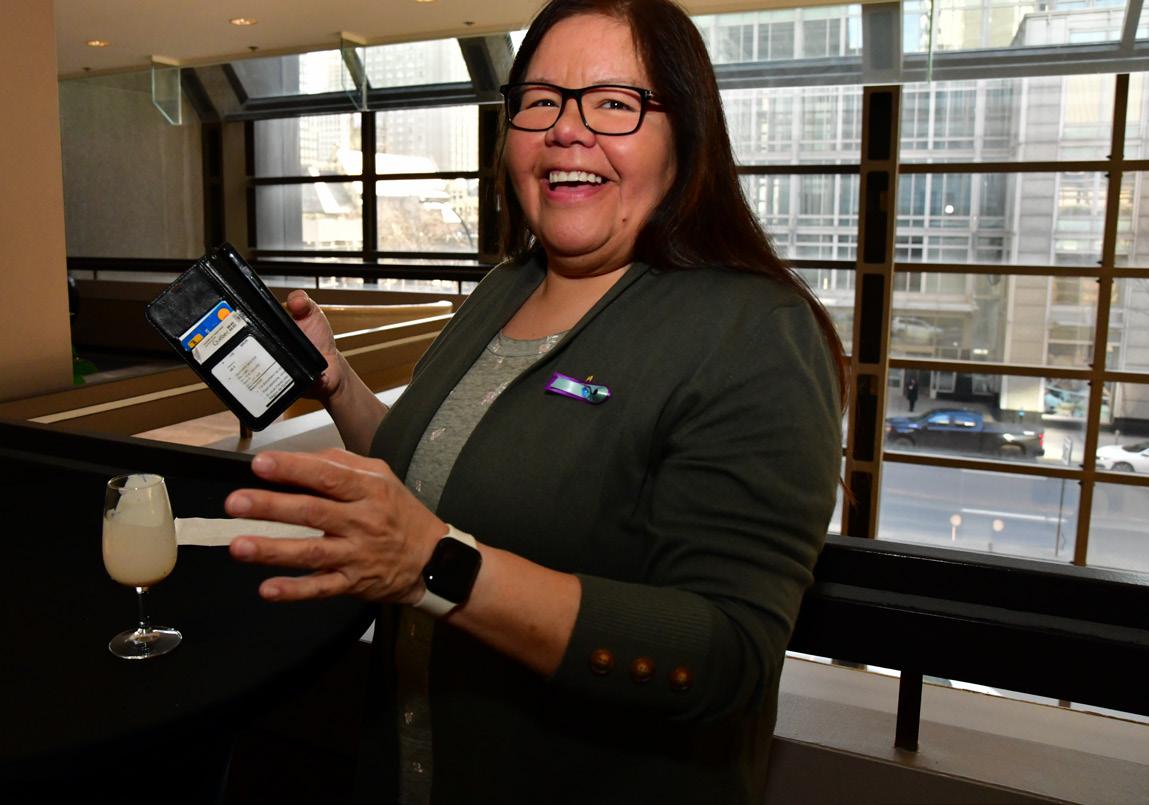
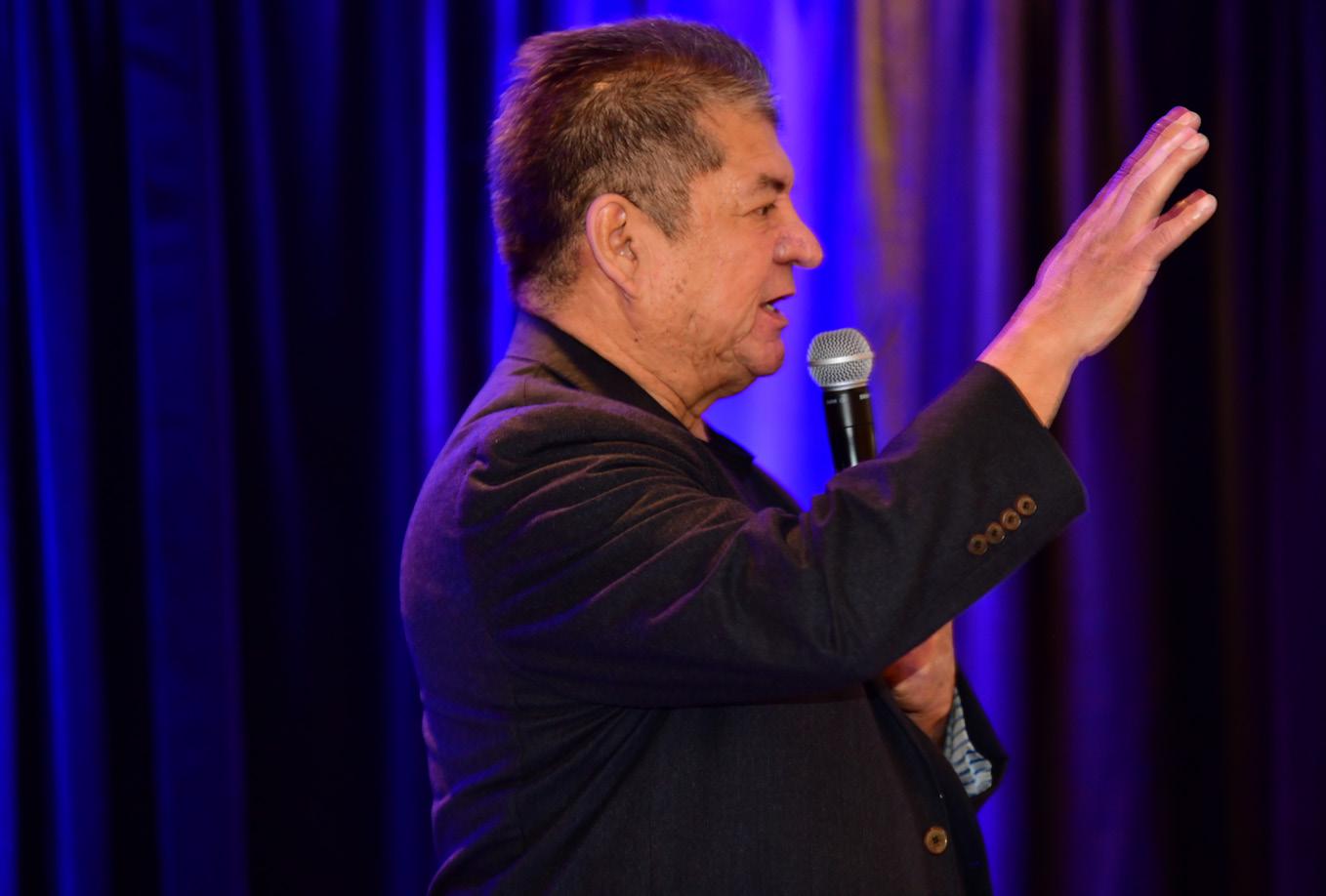
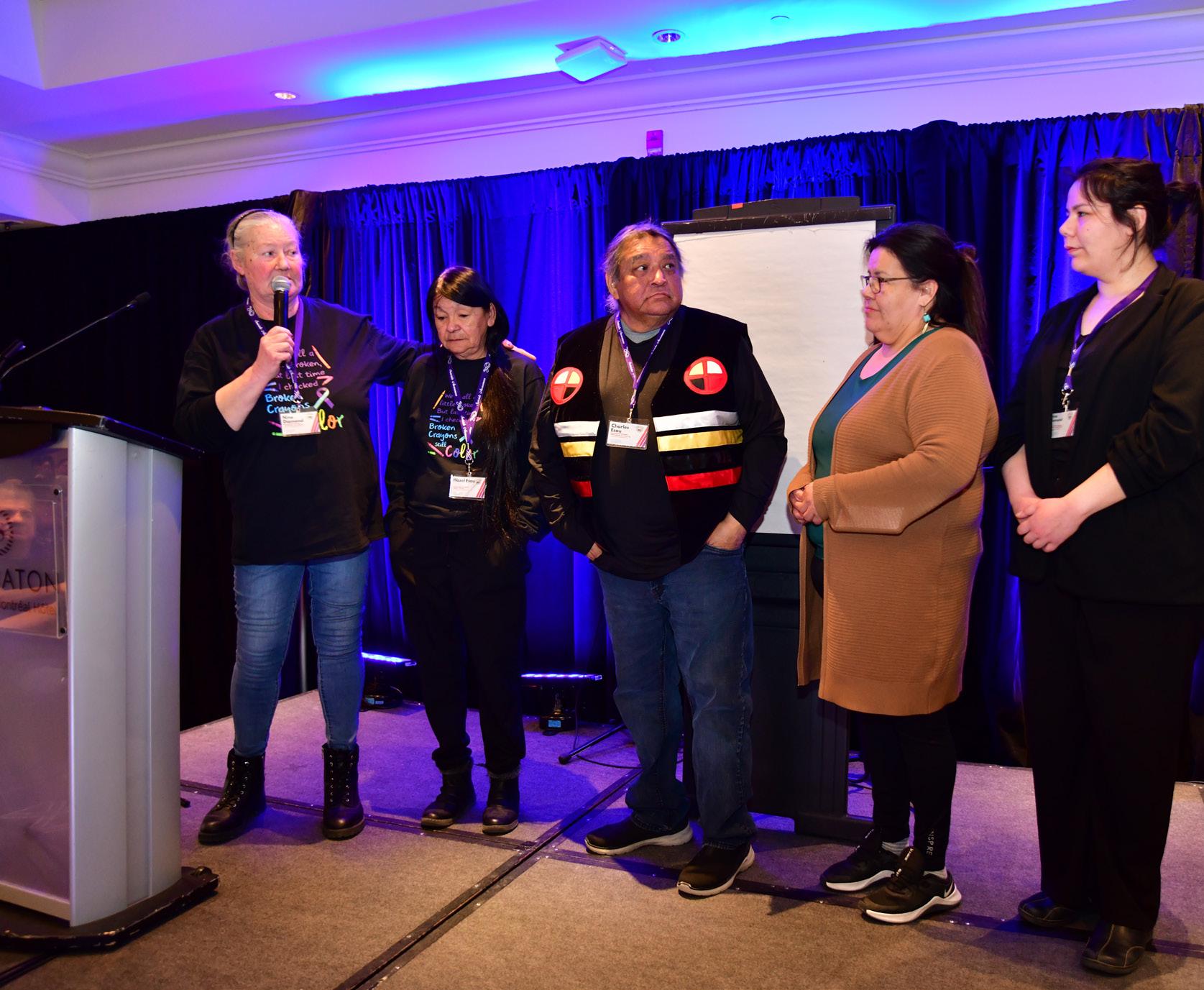
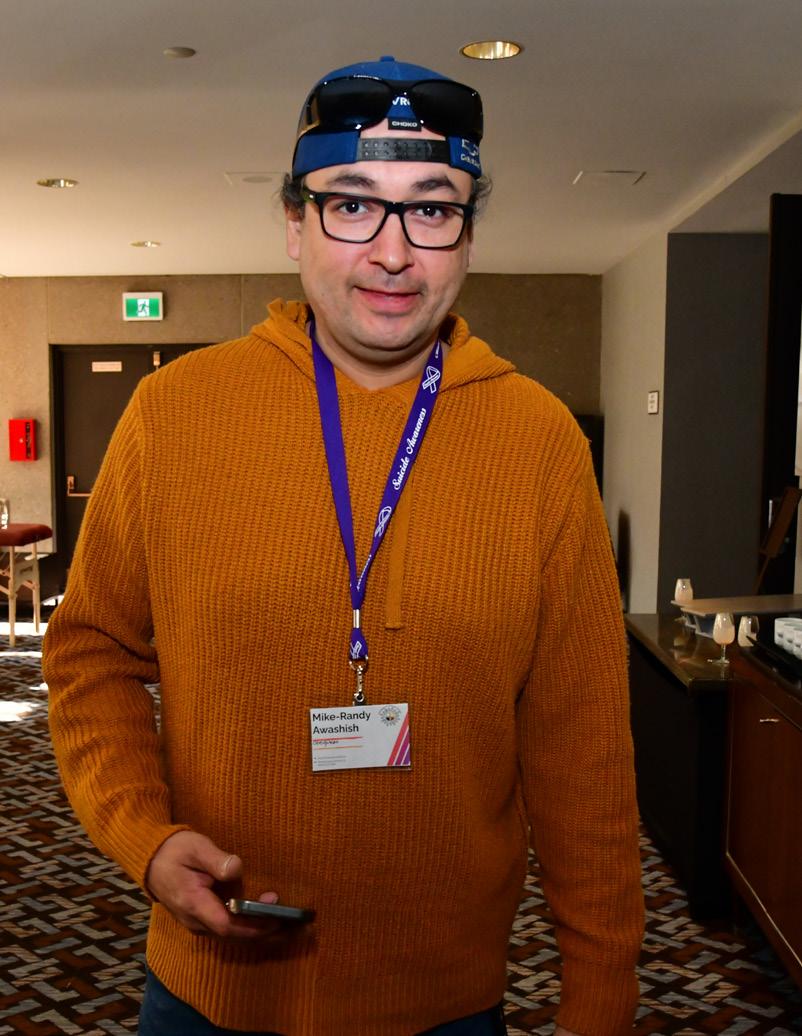
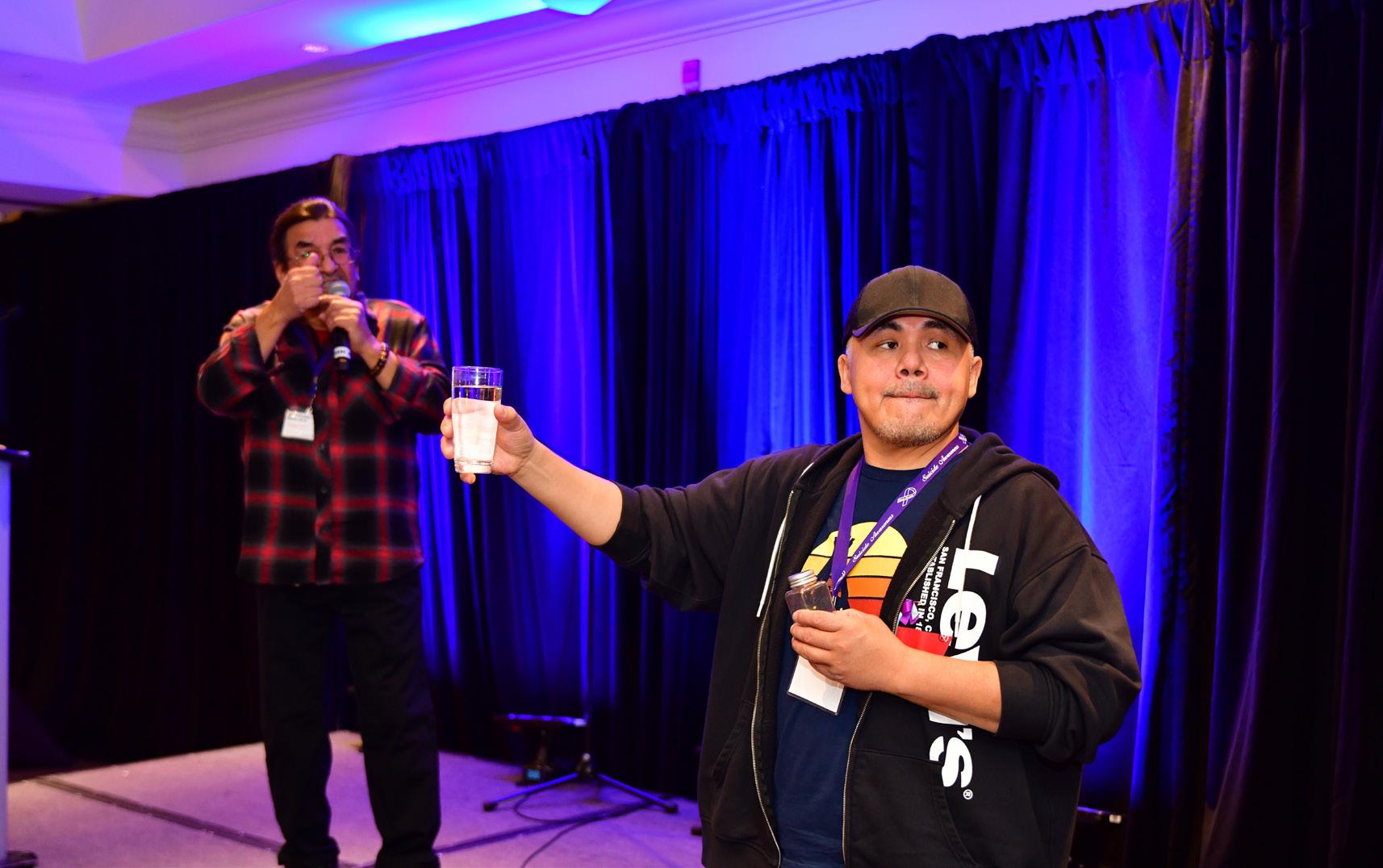



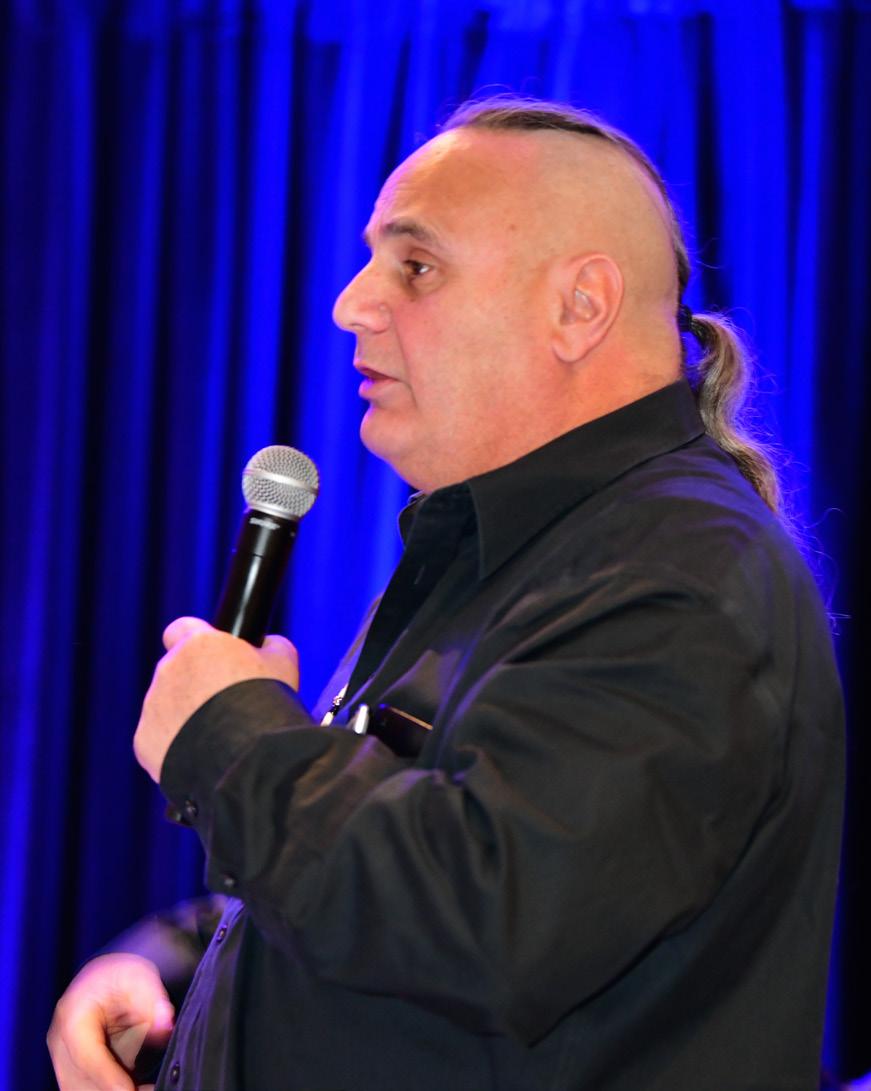
Addictions Counsellor Darryl Cupples of Kahnawake deliver an address on understanding and knowing suicide. Cupples has worked with the Wellness Society at the mobile treatment centre for several years.
“I didn’t believe in the Creator. I believed in Budweiser!” quipped Cupples during his presentation.
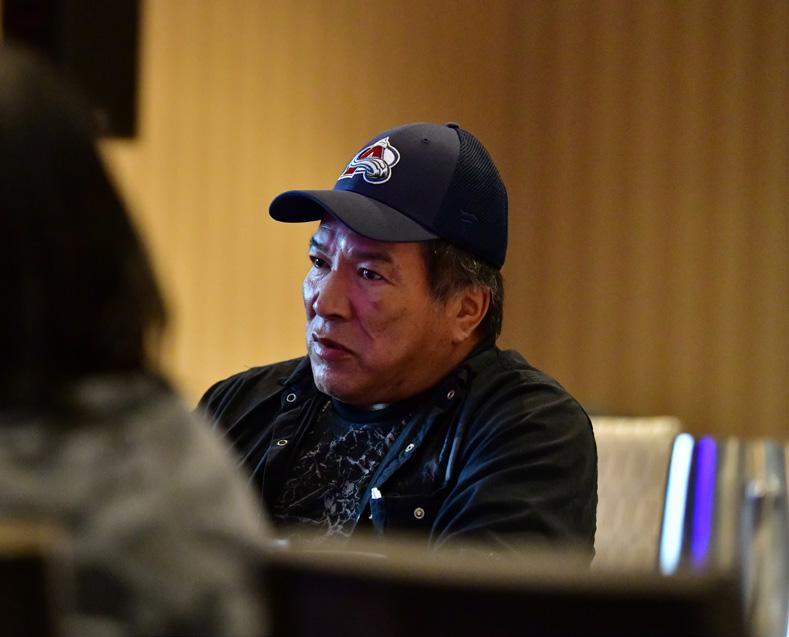
On the last day as the event was winding down the crowd grew excited when Nina Diamond, one of the conference organizers, announced that the world renowned trauma expert Dr. Gabor Mate would be speaking at the Society’s Ottawa gathering in late May.
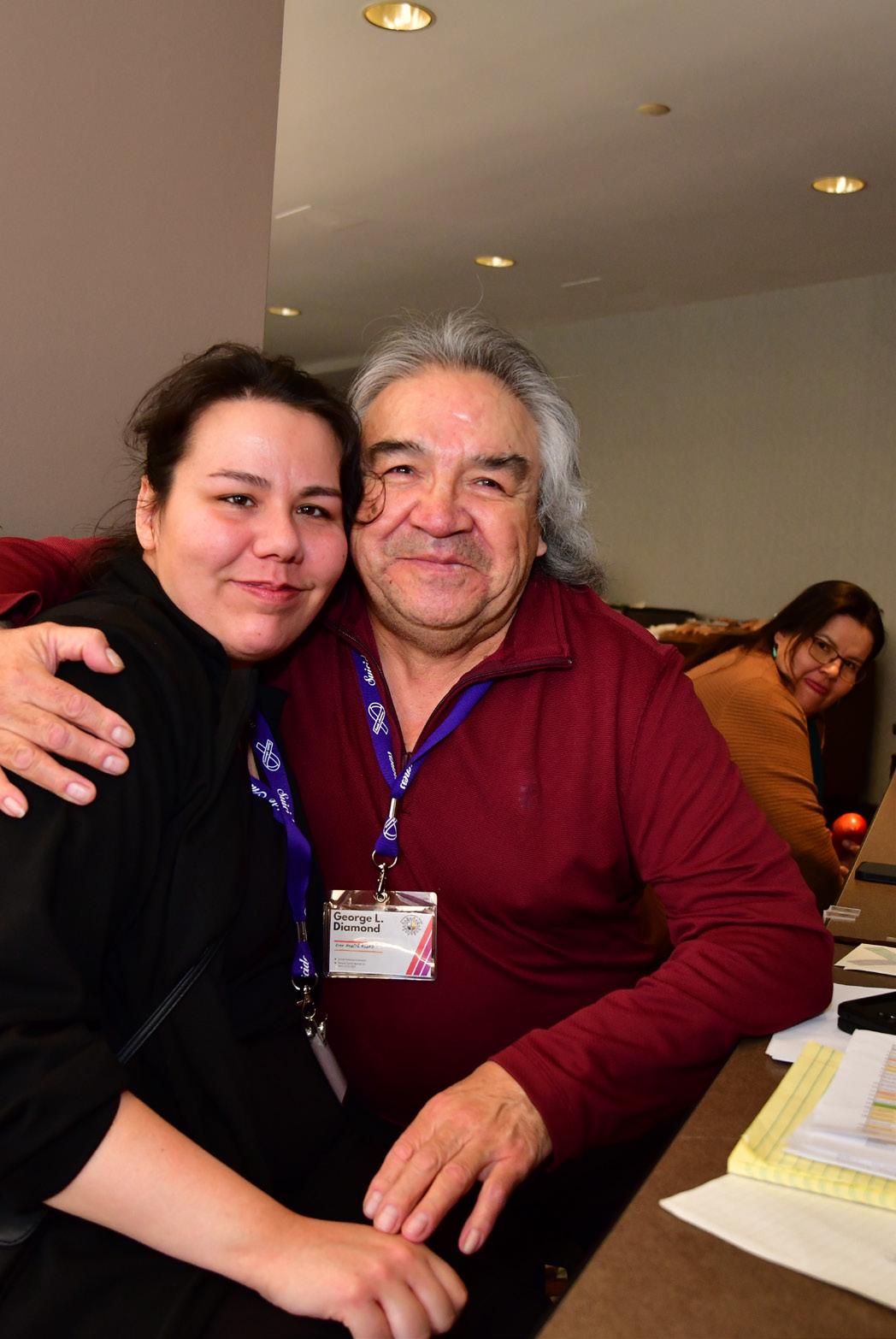 Peter Esau of Waskaganish shared a painful memory of his brother’s suicide on his birthday.
George L. Diamond, now retired but still busy, gave an address on Lateral Violence and Lateral Kindness.
Peter Esau of Waskaganish shared a painful memory of his brother’s suicide on his birthday.
George L. Diamond, now retired but still busy, gave an address on Lateral Violence and Lateral Kindness.


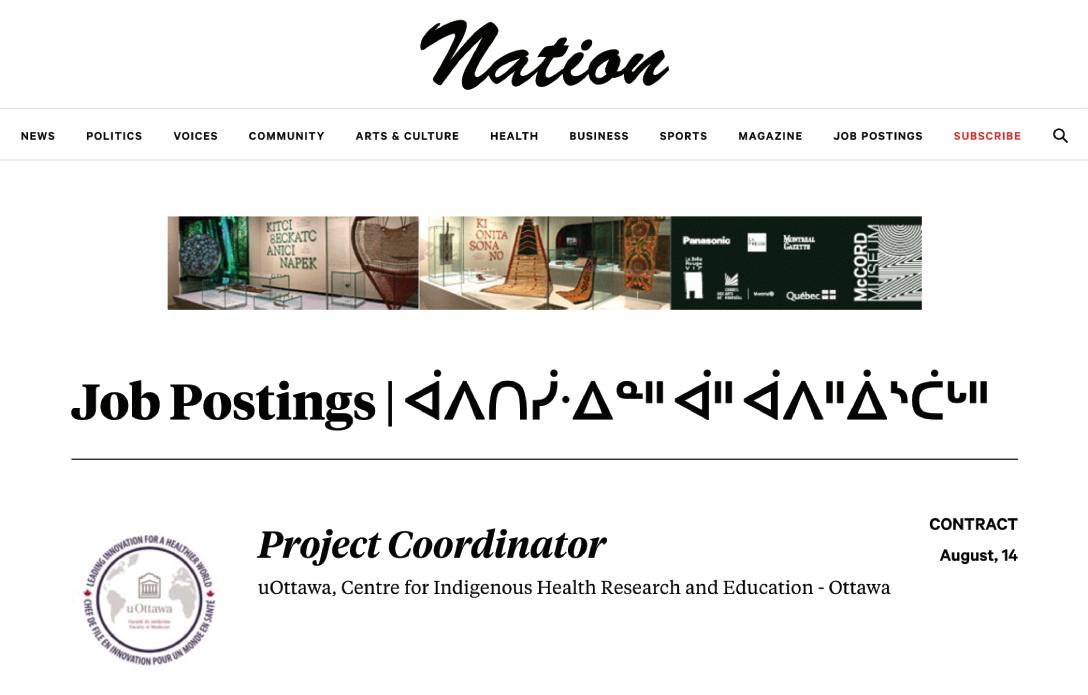
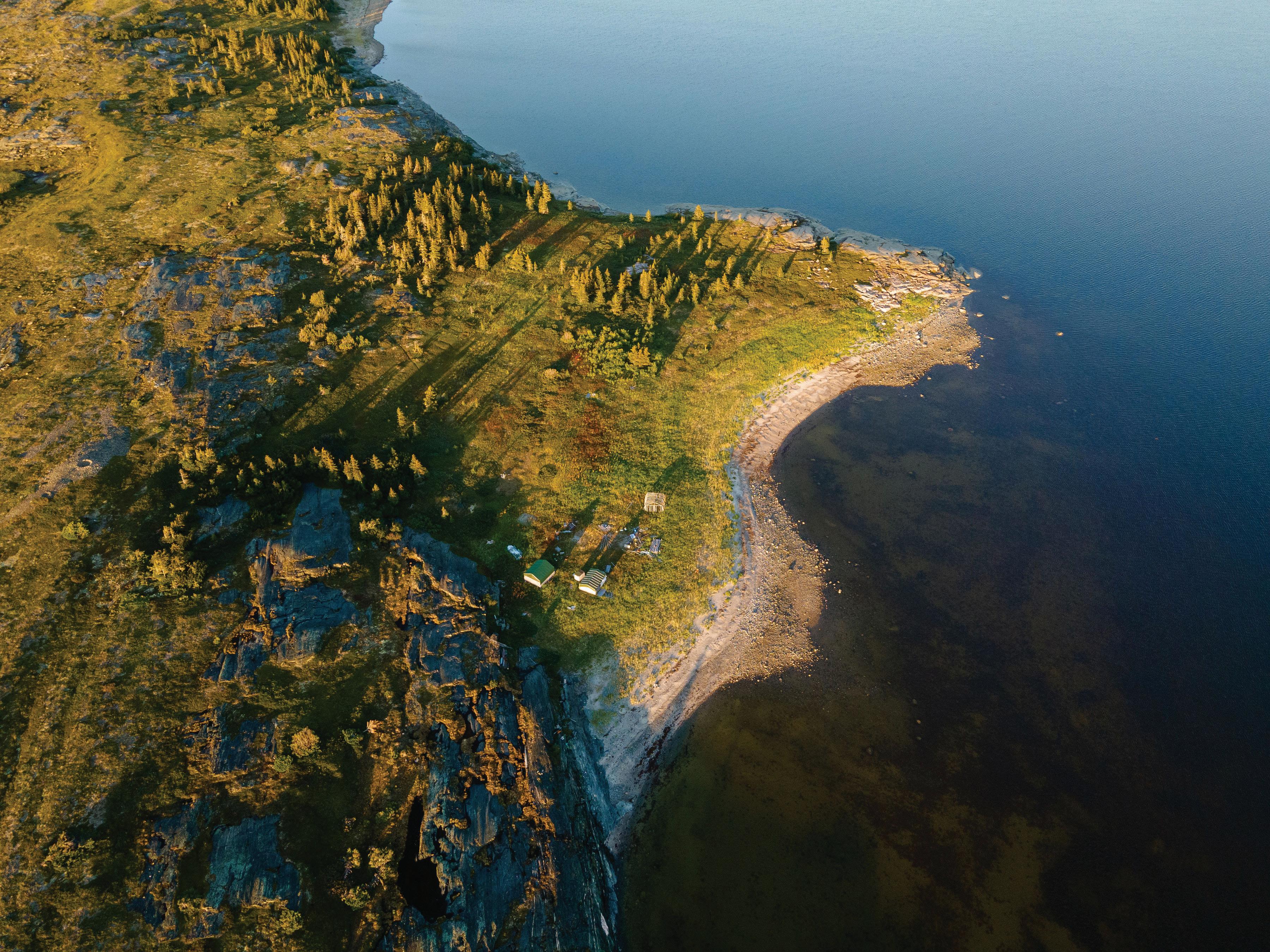
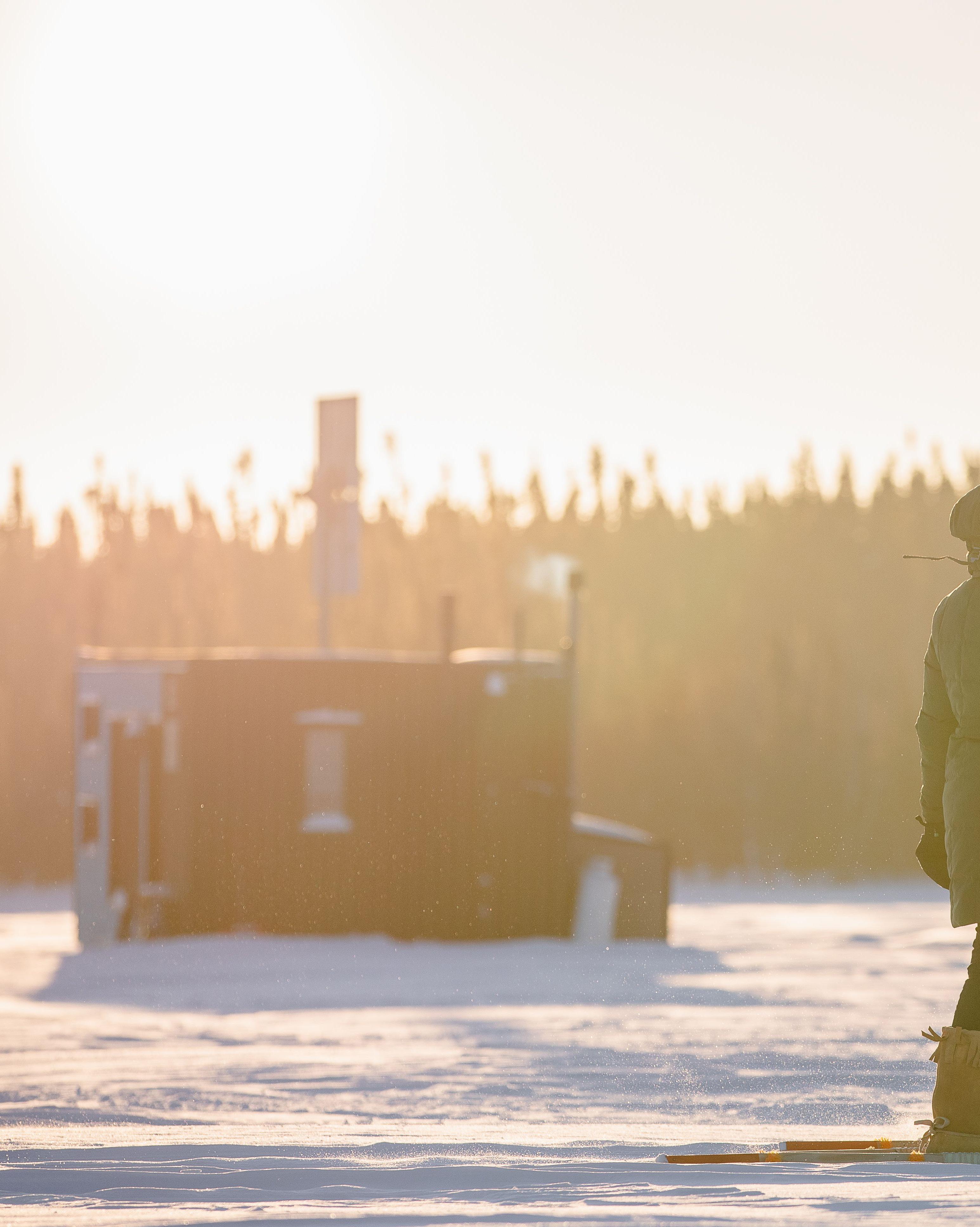
After launching an outdoor cinema on the water, an astronomical observatory and unique cultural tourism packages last summer, Nibiischii Corporation was named as a top-three “business that launched a new experience” at this year’s Indigenous Tourism Awards.
Nibiischii manages tourism activities at the Albanel-Mistassini-Waconichi Lakes Wildlife Reserve, which was transferred from provincial park agency Sépaq to Mistissini in 2017. Under the leadership of executive director Mireille Gravel,
Nibiischii has steadily evolved to emphasize a distinctly Cree vision of eco-tourism.
“Being recognized for all the hard work we’ve been doing is like a tape sur l’épaule, a pat on the back,” Gravel told the Nation. “We’ve never been so popular in terms of tourism. People want to come for the fishing, Indigenous culture and eco-tourism. It’s amazing.”
Since opening their Mwakw floating cabins in 2022, they have added a multitude of complementary attractions that bring together Cree culture, nature and adventure. After some pilot projects over
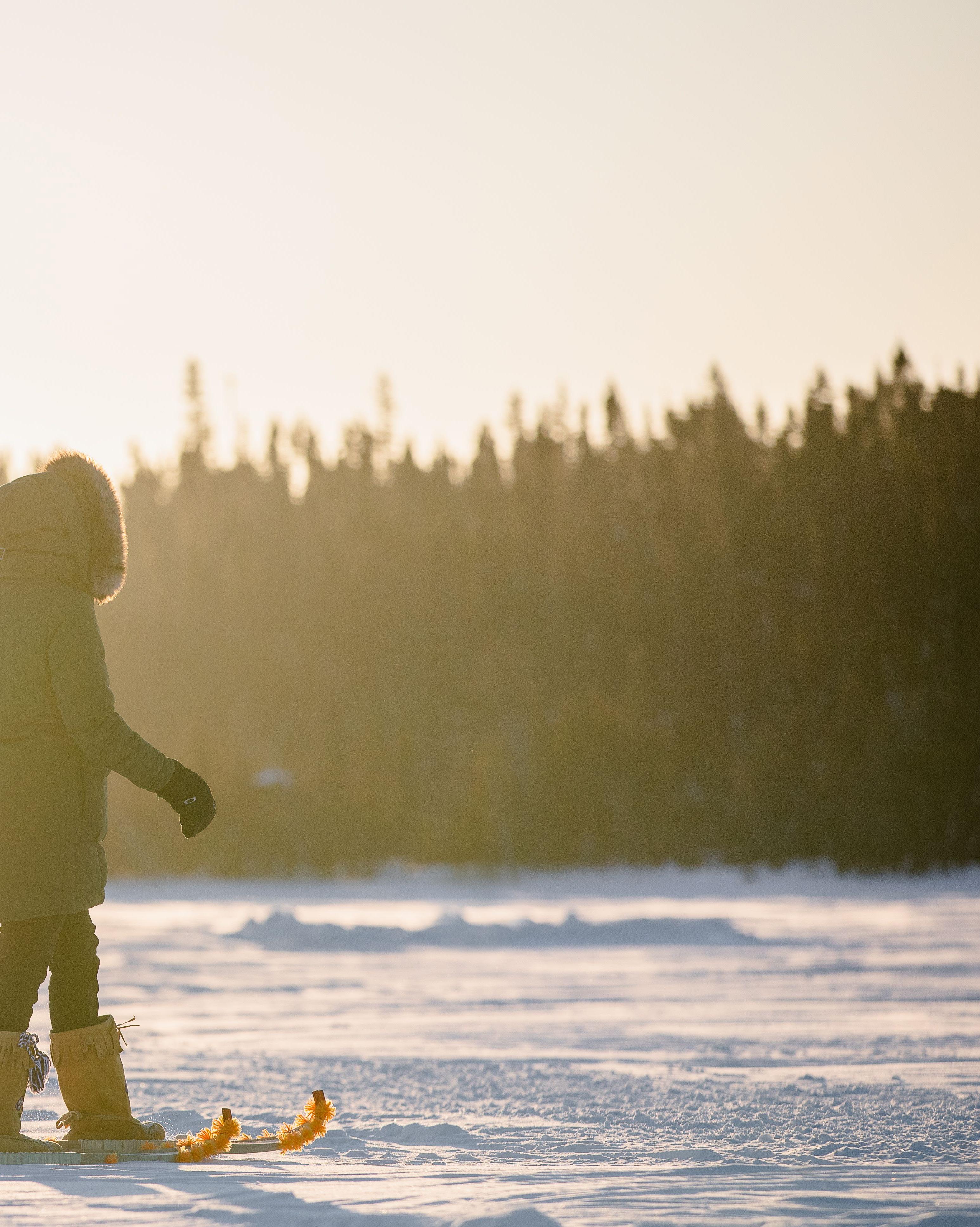
the winter, Nibiischii expects that with the new electricity connection almost installed it will be fully functional to open for year-round operations beginning May 31.
“We’re planning on finally having regular full-year operation in Waconichi,” said Gravel. “Everything is upgraded, beautiful and ready to welcome at least 50 people per day. For the summer, we’re booked almost completely a year in advance. For the fall, we have a lot of reservations already for corporate retreats, mostly Cree entities, so that’s fantastic.”
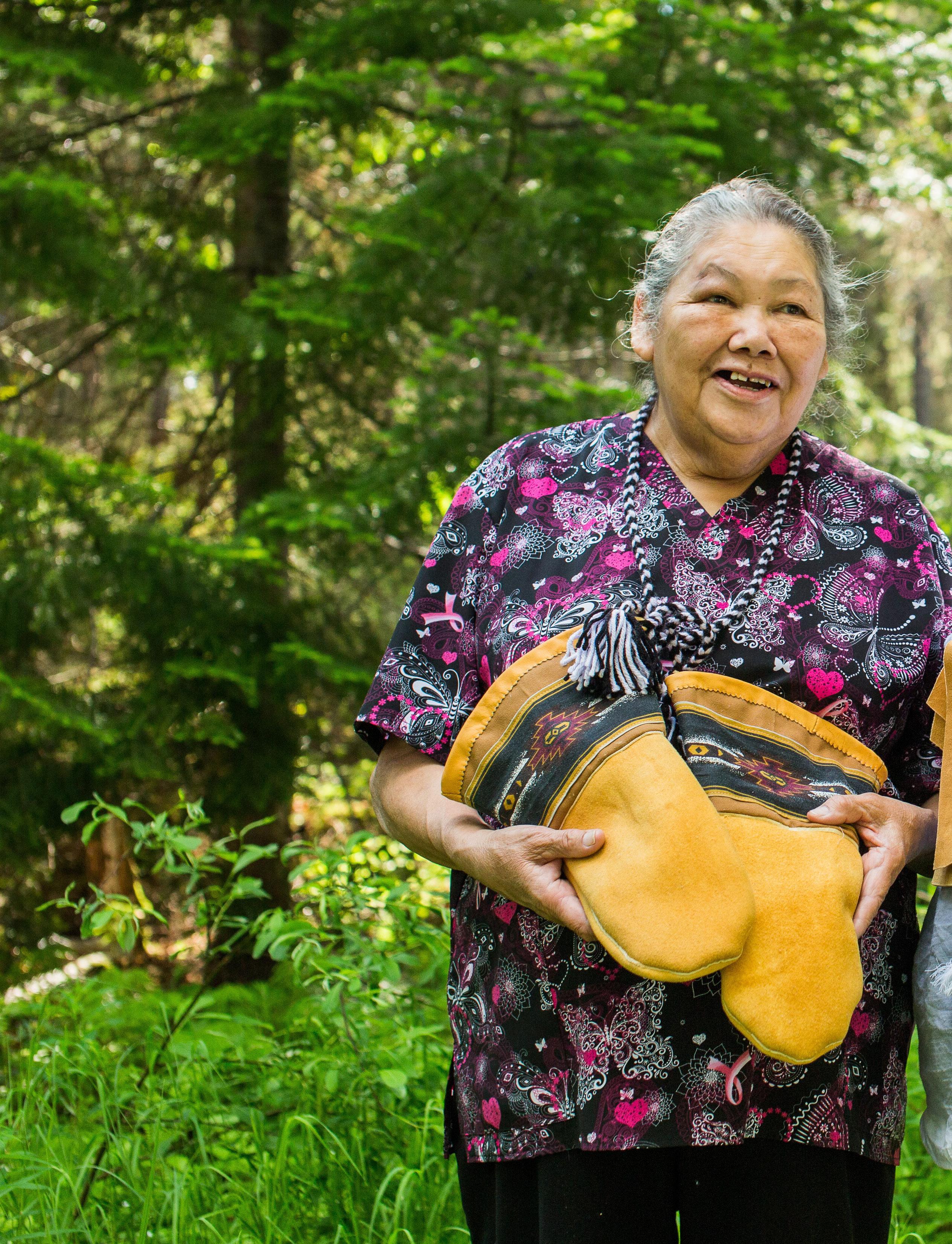
Gravel said remaining spots at Waconichi Lake’s floating cabins and other sites at Albanel Lake and Pénicouane Bay are filling up quickly. There are also newly upgraded and built camping sites with “rustic cabins that are very nice and insulated,” responding to requests for greater comfort during those cold nights.
Insulating for energy efficiency aligns with Nibiischii’s sustainability values, minimizing consumption of wood and generator fuel. While most of the inherited lodging and other infrastructure is little different than standard outfitting camps around the province, an objective this year is integrate Cree architectural aspects.
As they prepare the sites and hire new staff ahead of launching summer programming, staying open year-round seems to be supporting recruitment efforts. An official calendar released before each season will detail the schedule of film projections and other cultural activities.
“What’s interesting with this programming is you don’t have to have lodging on the Waconichi site,” explained Gravel. “Youth from Mistissini or anybody who wants to see one of the movies can just come for the evening and pay for their ticket. We also get our site known this way – they can come back for fishing or lodging.”
In addition to the waterfront cinepark and stargazing observatory, Nibiischii is currently constructing a 4.5-kilometre Arial Trail to launch in fall 2024, which includes breathtaking cliffhanging sections, a suspended bridge and stunning views. Cultural interpretation will enrich the trail, blending panels, sculptures, and virtual reality to provide a fully immersive experience.
“It’s an adrenaline project but very secure so you don’t need a guide or anything,” said Gravel. “You can get to the trail walking or by canoe – that’s way more fun! You get out of your canoe and click your phone to watch that clip and it’s like you were there while the family is doing their traditional activities.”
While these short 360-degree clips are no substitute for authentic interactions with people on the land, it’s one more way to share with visitors the Cree way of life. The Cree language is prominent in signs and artwork, with explanations provided to convey the meanings behind names because “when you understand, you get more respect.”
Recognizing the wildlife sanctuary’s colonial history under the Quebec government, Gravel hopes that local Cree feel the pride of ownership and are soon rewarded with economic spin-offs. Visitors must likewise respect that they are guests on the land where Cree people continue to live and thrive.
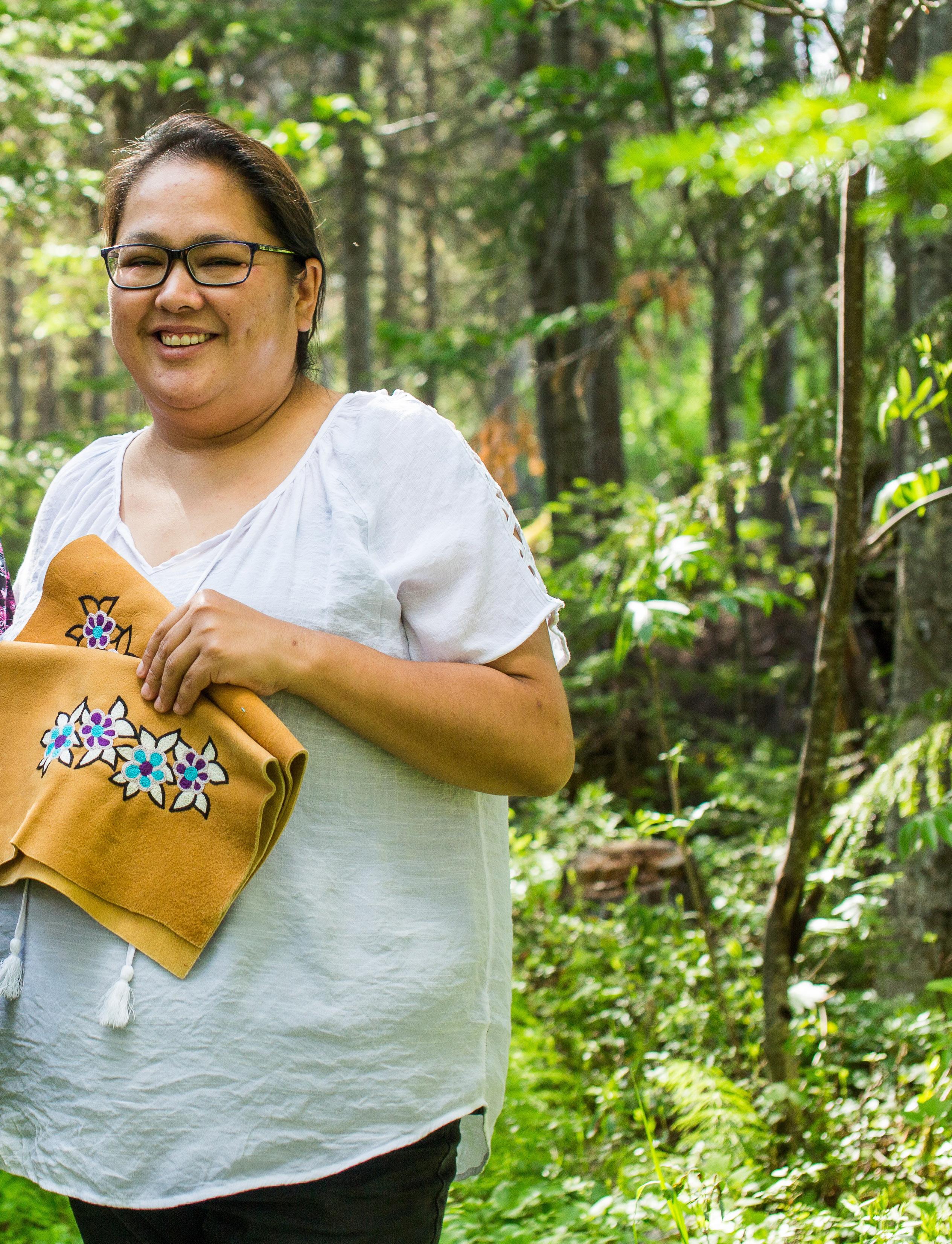
Gravel hopes to expand the number of locals offering cultural activities like the popular guided mushroom and tea walk, perhaps eventually offering permanent jobs as cultural officers and official guides. As Waconichi is on the Mianscum trapline, family members sometimes show visitors the Cree way of smoking fish or light the teepee fire.
Besides occasional cooking workshops, hungry clients may purchase boilin-a-bag meals containing locally sourced non-timber boreal forest products from a chef in Chibougamau. The meals have earned such rave reviews since being offered last summer that the Cree Outfitting and Tourism Association (COTA) started promoting them in hotels and other enterprises.
COTA is working on a larger project to promote Cree cuisine and, like last year, was instrumental in preparing the application for this year’s Indigenous Tourism Awards. The gesture was rooted in positive personal experience following its team’s own staff retreat at the site.
“The floating studio and complex on the lake were a spectacular backdrop to our team-building exercises, with the added novelty of doing yoga on the water,” said COTA executive director Robin McGinley.
“Our team bonded as we hiked the nature trails, learned bannock-making and traditional cooking, and stargazed at the open-roof observatory.”
McGinley encourages Cree entities to schedule meetings at Nibiischii, believing that many in the region don’t fully appreciate the wonders “in our own backyard.” COTA provides marketing, booking and promotion services for attractions like the Nibiischii Corporation and Wiinipaakw boat tours in Waskaganish.
While last summer’s fires destroyed the first Creetopia base camp, which Wiinipaakw Tours was going to operate, COTA is considering alternative accommodations where the Cree-style “glamping” sites could be established. Some communities may be interested in creating campgrounds with RV hookups, tent platforms and spaces for higher-end options like Creetopia.
As COTA develops its next regional tourism plan for 2025-2030, it’s engaging in community consultations to motivate interest in tourism. Those who share ideas are eligible to win a trip for four to Nibiischii.
“We’re proud of them and will keep helping them,” asserted McGinley. “It’s incredible what they’ve done to diversify, renovate, add new creative things for the visitor experience. They’re definitely a flagship and a leader we can all learn from.”

SIKU, the Indigenous Knowledge Social Network, has ice and geese trending again this spring as the annual goose watch competition takes flight for its fourth season on April 1. All Eeyou Istchee communities are eligible for prizes, including a $100 gift card for the first qualifying goose harvest post in each community.
“Spring is the time when everyone is getting out there, in the wild, so we wanted to help reengage people, both with their natural surroundings and each other,” said Joel Heath, executive director of SIKU’s founding organization, the Arctic Eider Society.
The contest will be open to anyone who downloads the free SIKU app, described on the app store as “a mobile app and web platform by and for Inuit which provides tools and services for ice safety, weather forecasting, language preservation, and knowledge transfer.”
The SIKU app is a map labelled with user-generated icons indicating everything from ice thickness to animal spotting, with names all written in original dialects and colonial borders removed.
“The new names and new border lines we see on regular maps now,” said co-founder Lucassie Arragutainaq, “they were not here on day one, so why should they appear on the SIKU map?”
The app is similar to Waze, which incorporates user-generated data to provide real-time road updates and con-
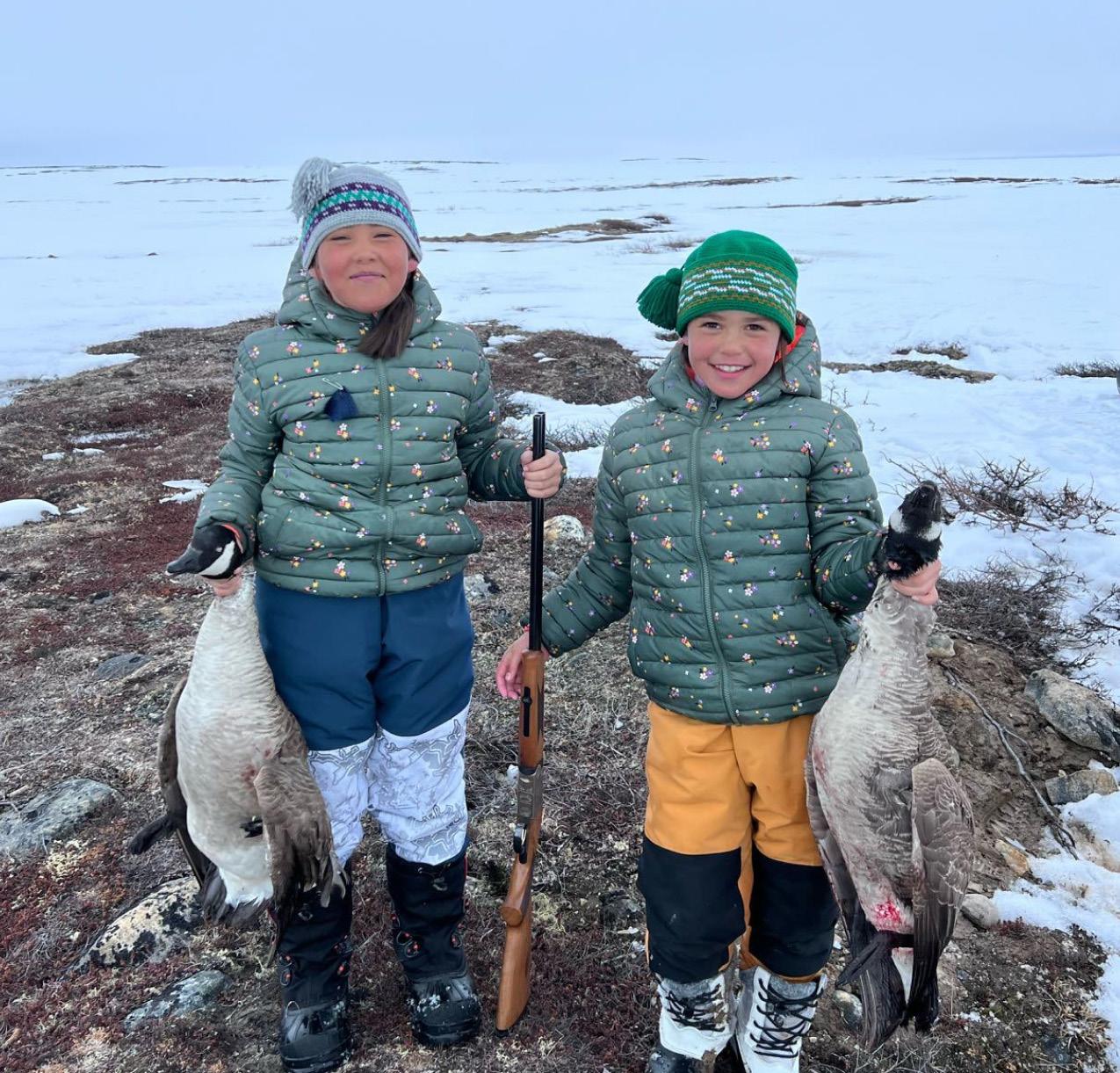
ditions. However, SIKU excels off the grid in nature, allowing users to create posts in real-time while hunting without an internet connection, and then upload all the vital information recorded when back home. Like all social networks, SIKU intends to help strengthen the ties and communication between communities.
Lucassie Arragutainaq from Sanikiluaq, Nunavut, says that the app’s inspiration came from Inuk seal hunter Peter Kattuk.
“Peter would go out on the land and report everything he saw and learned,” said Arragutainaq. “He would come back to tell the community what they could do and what was safe – everything to make the hunt possible and successful. One day I asked, how can we do this but make it for everyone and easier for you. And Peter told me, ‘It’s time to put the harpoon and the computer to work together.’”
Recipient of the 2022 Northern Science Award, Arragutainaq documents Indigenous ecological knowl-
edge and has participated in multiple studies on Hudson Bay’s changing environment.
“There were so many people involved in this,” Arragutainaq said. “When we work together, we learn how to make things work for everyone. The Inuit environment is changing, it has been changing, and for 20 years, we have been asking the other side to prove our pressing issues to the world. With SIKU, we are proving Indigenous issues for ourselves.”
Heath agreed, saying SIKU provides a professional, data-driven platform that evens the playing field in environmental debates.
“The brainstorm for SIKU realized that Peter’s knowledge was often written off as stories or anecdotal by non-Indigenous people,” said Heath. “But we knew every time he was at the ice flow edge that he had data points and that he had talked to others in the hunter peer review system.”
The data comes out in yearly totals, including graphs showing what the ani-
mals are eating, allowing hunters and scientists alike to see how the diets of animals change with the seasons or when they are most hungry. Heath says this helps protect wildlife and continue sustainable harvesting methods. For example, SIKU’s data from 2022 showed that in winter months, nearly a third of seals had shrimp in their belly when caught, compared to summer months, when fish accounted for over 60% of belly contents and shrimp less than 10%.
In 2022, SIKU’s goose watch gained national attention for helping track the avian flu outbreak. “It just goes to show what is possible when we invest in Indigenous communities and large-scale climate data projects,” Heath asserted.
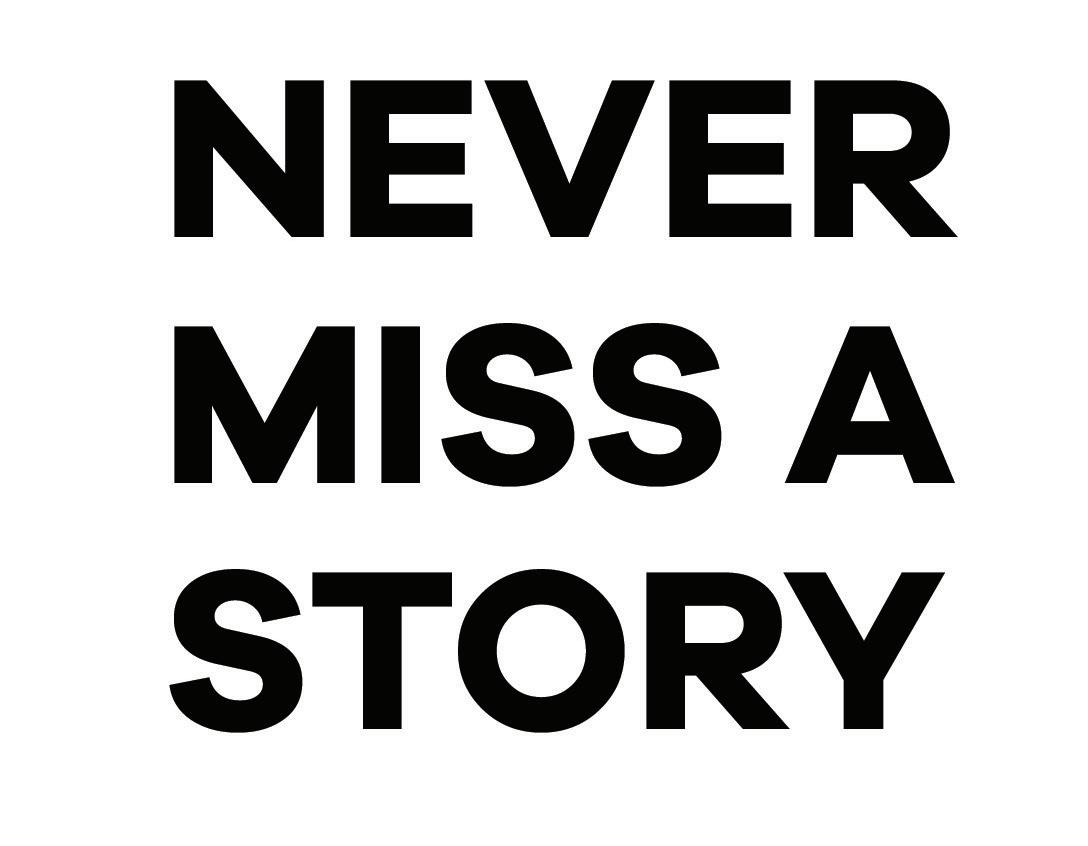
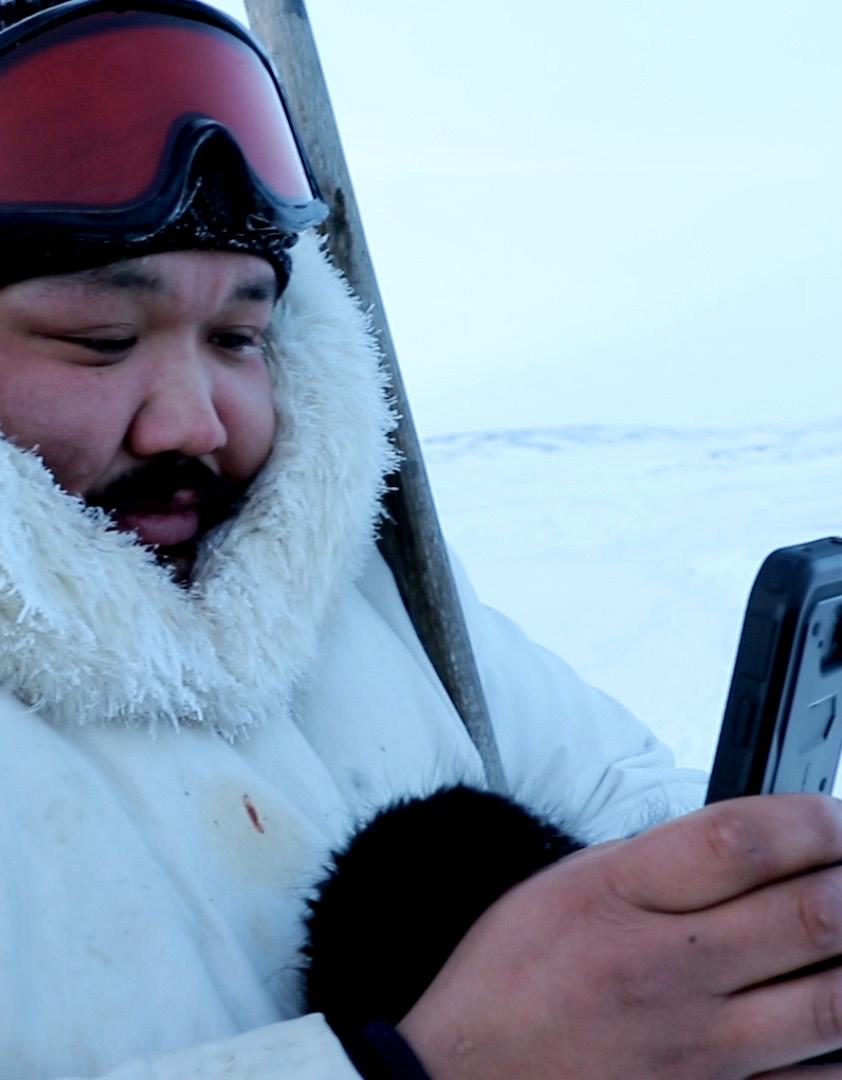
In 2023, over 200 different users from 46 communities made over 1000 goose posts, showing the possibilities of large-scale Indigenous environmental cooperation.
The 2024 Goose Watch is open to everyone, inviting participants to track the spring goose migration by simply using the SIKU app. Inuit, Cree, and Innu communities are all eligible to win prizes totaling $1,000. The challenge encourages sharing knowledge among northern communities about goose migration, nesting, hatching and population health.
To join, participants need to create an eligible Goose Post on the SIKU app between April 1 and July 31.


May 28-29, 2024
Toronto, ON
Network with purpose at CCAB’s largest ever celebration and business forum.
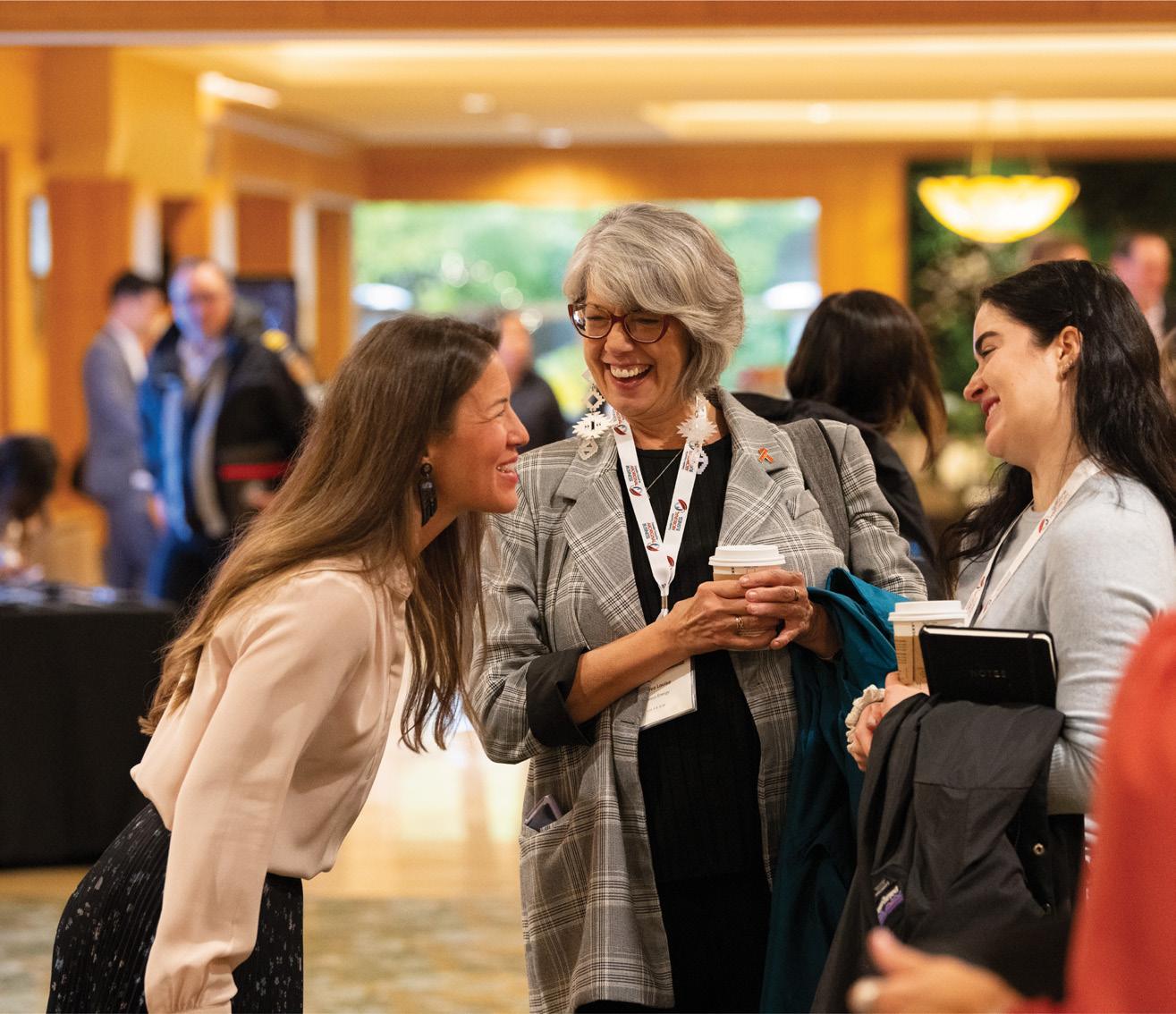

THE NATION WEBSITE HAS MONTHLY 10,000 READERS

Four out of ve people in Canada turn to print or digital newspapers as their trusted source for news and information. And research nds they trust the ads too – more than any other medium.
Be where Canadians are looking for credible news, written by humans, for humans.





Mistissini Allstar looks towards NHL dream
by Joshua JankeIt’s hockey playoff season, and Israel Mianscum of the Sherbrooke Phoenix is proving that he is the real deal.
During the 2021-2022 season, #24 from Mistissini was becoming a household name, as the sharpshooter totaled 20 goals and 21 assists for 41 points.
Last season, Mianscum established himself as a point-per-game player, reaching the 30-goal milestone for the first time while racking up a generous 31 assists in the process for a total of 61 points in 65 games.
However, with key players being traded from his team before the start of the 2023-2024 season, there were large gaps and question marks throughout the Phoenix roster. As one of the few remaining team veterans and in his last year in the QMJHL, the pressure on Mianscum continued to grow, with hockey analysts wondering if Mianscum would score less with weaker talent surrounding him on the ice. Some QMJHL analysts even wondered if he would be traded to a stronger playoff contender before the trade deadline.
Mianscum was Sherbrooke’s surest bet this season, leading the team and exceeding all expectations with career highs in goals (35) and assists (52) for 87 points in 61 games. In mid-March, the team clinched a playoff spot, meaning Mianscum’s season is far from over, with playoffs beginning in early April.
His father, Louie Mianscum, remembers the season’s start and how his son

was fueled by the expectations required of him as a team leader on a young team facing older, more experienced opponents, some who had played for the Phoenix with Israel just the previous season.
Ever since he was a child, Louis says Israel always shown perseverance on his path to the pros.
“When he moved out at 11 years old to follow his passion for hockey, we made it our goal to still attend as many games as we could and do as much as we could to support him. It’s not easy for a young player to move out at that age, to be away from the community. He is so strong for all he has done to accomplish his dream,” said Louie.
“It’s a big year for him, being 20 years old and in his last year. It is almost time for the next step, but I know that right now, his focus is completely locked in on the upcoming playoffs,” Louie explained.
“I remember him meeting with the GM at the season’s start, how there was talk about it being a rebuilding year. They wanted to know how he felt about playing for a team with fewer playoff chances.
“He said he was going to give it his all, on and off the ice.”
Led by Israel, the Phoenix surpassed expectations by qualifying for the playoffs with home-ice advantage and high hopes for a long run with Israel ready to leave everything out on the ice in his final games for the team.
Former Phoenix head coach Stéphane Julien says he’s thankful for the five years Israel dedicated to the team.
“It does not happen often that a player can play his first and last game in the league with the same team. Over the years, he has become part of the team’s leadership group and has improved in school and the French language as well,” said Julien.
“He should be proud of who he is and where he comes from. I am sure that today, there are many young hockey players in Mistissini who dream of one day being someone like Israel Mianscum.”
Israel says that he doesn’t get distracted by individual standings and focuses instead on his training, his game and helping his team.
“I just try to win games for my team, and if I can do that – producing on offense or blocking shots. I feel like this year, I’ve been helping a lot on offense. I just want to play for my team and succeed as a team,” he said.
Jonathan Deschênes has been an assistant coach with the Phoenix for the last three seasons and said he’s seen a lot of personal growth in Israel over that time.
“I think for him it was a matter of confidence. The more the years went by, the more he felt comfortable playing,” Deschênes said.
“He’s a beast on the ice. He has an NHL shot already. He works really hard and is learning how to work hard properly. Stuff like how you take care of your body, how you eat. I feel like he got better at all the things that make a pro-hockey player,” Deschênes said.
In his last 10 games, Israel has been producing at an elite level, averaging two points per game in this span, with seven goals, 12 assists and a +7 rating to his name while playing on the team’s top line and powerplay unit.
“As soon as we play in Val-d’Or, Rouyn-Noranda, Chicoutimi, we have a lot of fans who are there for Israel. They’re invested in him … he’s a hero over there and it’s really nice to see,” said Deschênes.

“The social economy is a space and a practice where economics is at the service of social ends, not the other way around.”
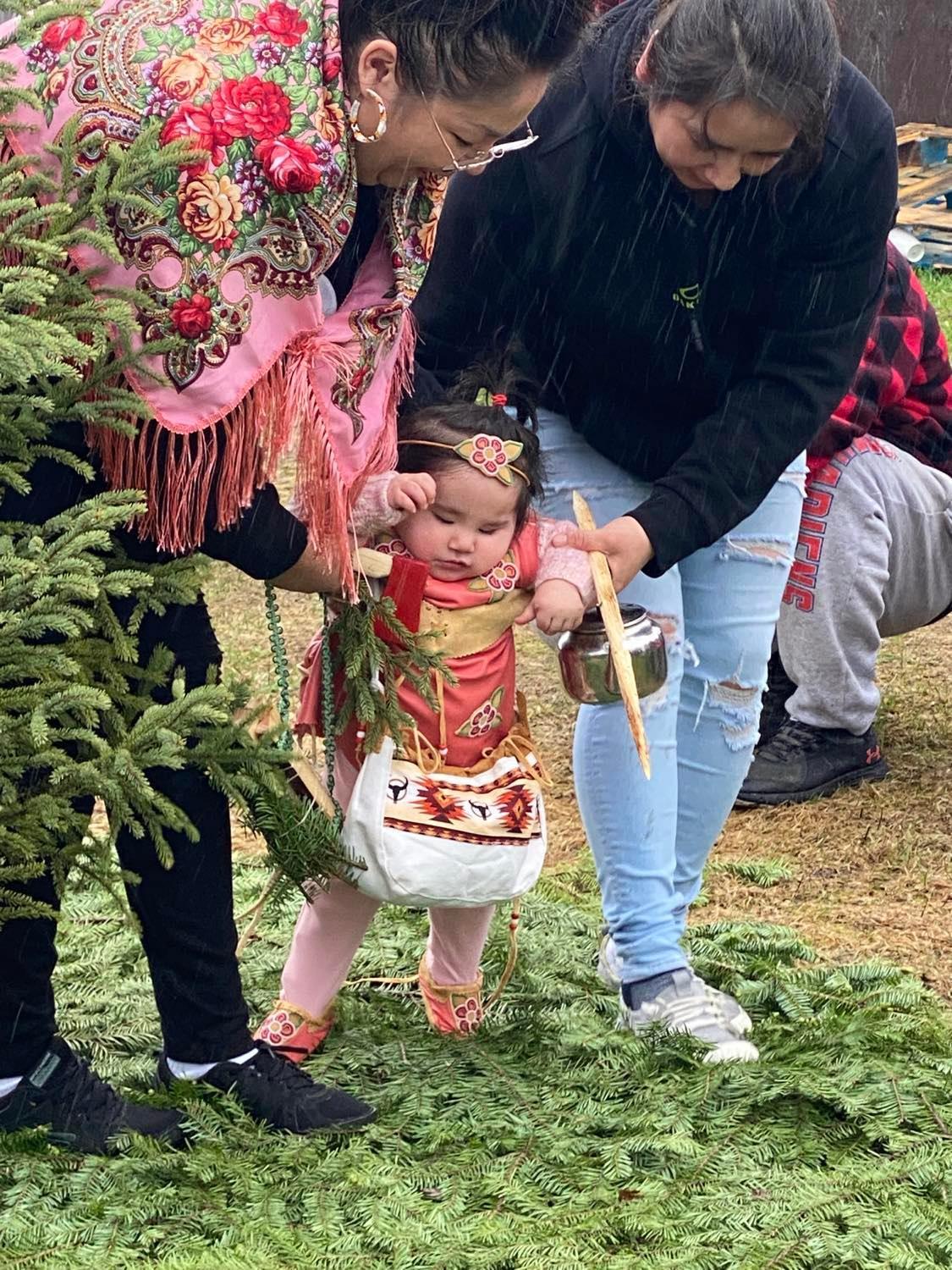
Funding Grant for Social Economy Projects
7 5 % o f p r o j e c t s c o s t , u p t o
$ 2 5 , 0 0 0
T r a i n i n g a n d C o a c h i n g
P r e - s t a r t u p , a n d s t a r t - u p
f e e s
E q u i p m e n t a n d s u p p l i e s
p u r c h a s e s
F e a s i b i l i t y a n d m a r k e t i n g
e x p e n s e s


EXAMPLES
Thrift stores
Cultural & wellness camps Community markets
Meals on Wheels
Local transportation Greenhouse Programs for persons with special needs
Community kitchens
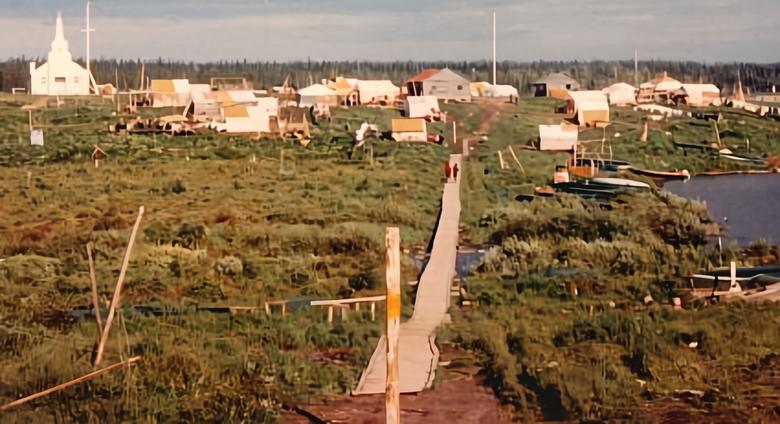




As told by Elder Adam Mamianskum, a storyteller. | Transcribed by Matthew Mukash
There was a time in the history of my people, the Eeyouch, when a creature referred to as “ejann” roamed the land. It was evil, terrorizing, and feeding on humans. Elders said ‘ejann’ was a physical manifestation of men’s hatred against each other. Some claimed it was a creature called in from another dimension by evil shamans, who used it to attack those that they didn’t like or considered their enemy. Only shamans with the highest degree of spiritual knowledge and wisdom had the power to send ejann back to where it came from.
This is the story of a family (the storyteller Adam Mamianskum’s great grandfather) who came upon the ejann one spring. This story is told in the first person:
It was early in the springtime. I had planned to construct a birch-bark canoe for my family’s journey downriver to Whapmagoostui, a summer gathering place located at the estuary of the mighty Great Whale River. My wife and I had three children, two young men and a younger girl. We had a family dog, a male husky. This was our annual trip every spring after the winter hunt. We‘d set up our camp on the south shore overlooking the river. Another family camped at about a day’s run to the southeast. Like us, they had planned to head to Whapmagoostui after the spring breakup. The river had broken up while I gathered tamarack and piled it on a spot near the lodge where I‘d planned to build the canoe.
As I worked, my dog would sit beside me in a resting position, watching me carving the wood. The scenery
before us toward the river was beautiful, with icebergs in various sizes and shapes floating downriver toward the west. Because I loved carving wood, the long spring days went by quickly. My wife would bring me my food and a drink of tea at mealtime.
One late afternoon, I happened to look upstream when I saw something on one of the icebergs floating downstream. On it was what appeared to be a human figure, but a huge one. The others saw it, too. We could tell that the dog had already sensed that something was unusual. He was looking in the iceberg’s direction with ears perched.
“What is it?” someone said.
When the iceberg came around the last bend east of our camp, the position of the figure changed; it was almost flat against the iceberg’s floor. The berg didn’t float in the centre as did the others; it went close to the shoreline on the opposite side of the river. The dog growled lightly, with notable anxiety. I could sense fear building in my wife and the kids at each passing moment. The iceberg went out of sight as it passed the next bend downriver. The dog inched closer, gazing intently toward the west, his growling almost bursting into full-blown barks.
I told my sons, “You will run into the night to get men from the next camp. Tell them what we saw and to come to check up on us tomorrow to see if we’re still alive. If it’s what I think it is, we might not survive the night. At least you will live.” Without wasting time, the young men got ready and ran off into the forest toward the southeast. It would take them a night’s run to reach the camp.
Toward dusk, my dog started barking with his nose toward the west. This told me that whatever we saw earlier was now on our side of the river. It was getting dark now. I went over to where I had carved wood, collected the wood chips and shavings and brought them into the lodge. I would use them as kindling to light the view in front of the lodge to see about fifty feet from the lodge. I placed myself by the flap door inside the lodge, and my dog sat just outside, a few feet away.
I told my wife and the girls to go to the back of the lodge and to stay put, to remain silent if possible. The dog barked increasingly loud and rapid. I knew he would eventually try to enter the lodge. I placed the kindling into the fire in the lodge’s hearth and lifted the flap door so I could see as far as the light reached in front. Looking around, I could see by the riverbank something that looked like two bright stars shining in the sky. I knew then that my visitor had arrived. What I saw was the reflection of the light in his eyes. Seeing what I saw, my dog tried to come into the lodge, but I hit it lightly on the back of the head with a stick to tell him to stay out.
ads

He moved back and placed himself on the left side of the lodge. At that point, the sound of his barking seemed to change. It became lower, deeper, and louder. I glanced in his direction and saw that from the silhouette of his body against the dark sky, he was almost as high as the lodge like he’d shape-shifted into a huge animal. I then heard him move forward in the direction where I’d seen tiny lights, his barking telling me he was moving fast
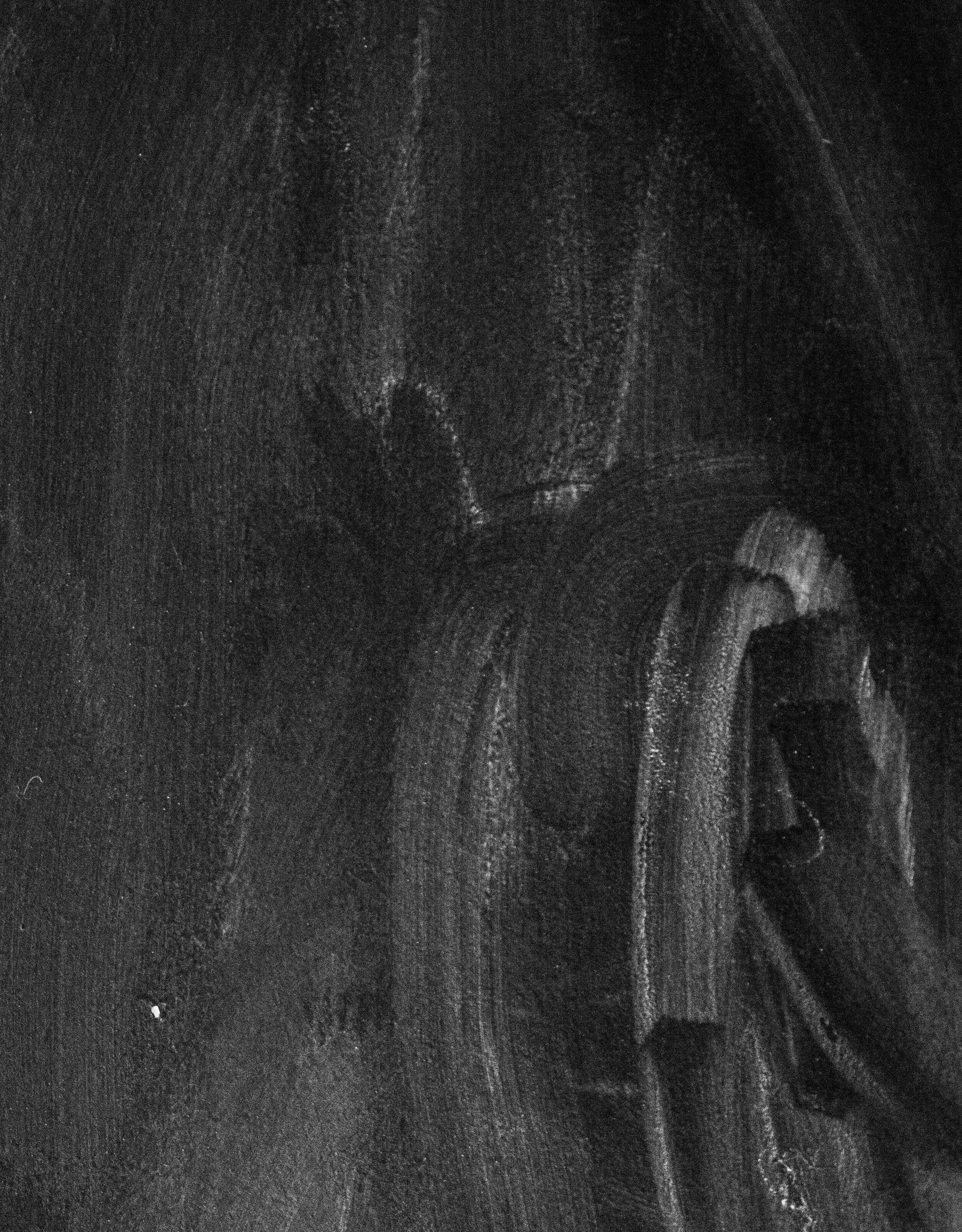
toward the riverbank. Then I heard the sounds of water splashing. I listened. I could hear his barking moving away from the shoreline and toward the other side of the river. In a few moments, I knew he had made it across. His barking became fainter and fainter toward the north, and then it disappeared.
“There he goes,” I whispered to myself, “I’ve lost him for good.”
I went back inside the lodge and told my wife and the girls to go to sleep; I would stay up and keep watch throughout the night.
The early spring’s short night was still. When I went out of the lodge to greet the first light of dawn, I could tell that this would be one beautiful morning with no clouds in the sky. I went over to my work area and resumed carving again, occasionally glancing over to the shoreline across the river, hoping that, by miracle, my dog would return.
Then, just before sunrise, I saw a tiny figure coming down the riverbank across. It was my dog! He had regained his normal size. He swam across towards our camp. When he got out of the water, I could see that he was not his normal self. Whatever happened to him ruffled his fur; it was sticking straight out in spikes. As soon as he reached the landing, he immediately ran toward the lodge, running around it as if looking for something. I called him over a few times, but he acted as if he wasn’t hearing me. My wife heard me. When she came out, she offered him food. At first, he ignored the food and continued to run around. Finally, after a few minutes, he walked over to the food and ate. After his meal, his fur became normal again, more relaxed. Eventually, he came over and played as if nothing happened.
In the early afternoon that day, my boys and the warriors from the other camp arrived ready to face the ejann, but my dog had outwitted them; he had chased away the ejann himself, alone.
It is said a dog will give its life so others can live. The spirit of love and compassion will guide him always. In the stories Elders share about dogs, animals will give up their lives to save a human life. One such story is the story of Dark Legs, whose dog saved his life and that of his family.


Here’s another edition of the Nation’s puzzle page.
Try your hand at Sudoku or Str8ts or our Crossword, or better yet, solve all three and send us a photo!* As always, the answers from last issue are here for you to check your work. Happy hunting.

PREVIOUS
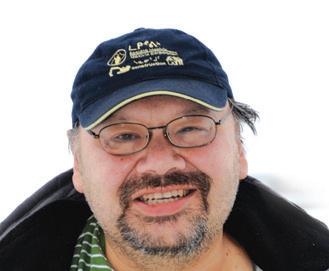

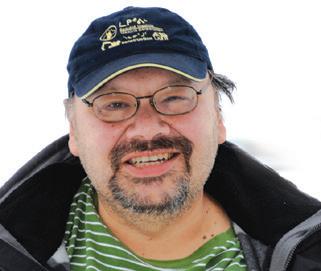
he pounding blizzard, beating rain, deafening hail and the fallen trees laden with jagged ice. Then the disconnection from the power and communication grid. Apocalypse? Hardly, it’s just typical northern Quebec weather that will change several times during a day in the supposed warm spring months.
As I see stragglers who weren’t aware of the shutdowns of the schools and other services slip and slide their way across the street and into the ditch, I wonder if cleats on my boots would help. Or for those in a rush, a pair of skates should make the cut for today’s daily commute to work. Like I’ve said before, typical northern Quebec springtime blues.
Now, I see that the schools are preparing for the annual spring break and families hustling to catch the last of the winter frozen landscape and lakes before melting season. Often, the snow and ice don’t collaborate and moving around can be difficult, so getting things done in the bush for goose hunting season requires a lot of preparation while the winter is still strong enough to keep your snowmobile afloat.
Getting enough firewood is usually the biggest activity before the warm winds of the south melt the ice on the goose pond. This is good planning. When the geese fly into your pond, the last thing you need to worry about is having enough firewood to cook them when you reach the teepee. Spring being what it is, there is always
Felling trees and splitting wood was a daily chore and the axe was your most valuable tool
a surprise weather snafu to keep you indoors, so firewood is an essential.
Back in the day before the chainsaw, the mighty axe did the job. Felling trees and splitting wood was a daily chore and the axe was your most valuable tool. As I grew up, the axe carried a responsibility for safety and sharpness. The uses for the axe were unlimited. You could build your own home with one using local resources. No one left their camp without at least one. Sometimes, the axe was always in hand as you went through thick brush and used it like a machete in the jungle.
Today, myriad problems plaque the modern-day lumberjack, with chainsaws and other mechanical tools being the main culprit. It takes fuel and oil to get a machine going, if it has been properly maintained and used. Then it takes two hands to wield and requires a ear protection. Then it’s a little dangerous, from sawing off your right leg to getting stabbed by a low hanging branch of the
tree you just felled, to chopping off your other leg and left hand with one swoop of the axe. Yep, getting firewood is for the brave and sometimes foolhardy.
As the snowmobile, which reluctantly coughed into action and rumbled noisily to camp towing a half ton of equipment, fuel and oils to fetch the most dangerous energy source in the world – the trees of northern Quebec. Some trees have withstood the ravages of time and are hundreds of years old before they die and dry out enough to use as firewood. These trees are somewhat scarce to begin with now.
Yep, being one with nature does come easier while holding the trusty axe as the sense of accomplishment triumphs over weary, unused muscles that ache for the days when turning up the thermostat was the only effort you needed to warm up. So, get ready, go to the workout centre and prepare those muscles for the trials of a wet spring.


Ihave learned a few things after almost five decades on this earth. One of them is to live in the moment. Ever since my partner suffered from a lung disease, I am more aware of how important it is to savour life, to be kind as possible and to find joy in your work. It’s not always easy, but I find it leads to a happier existence.
My parents worked very hard all their lives. They dealt with the effects of colonization – residential school horrors, racism, few opportunities for work and precarious living conditions. They took comfort in their children and grandchildren, but rarely had the time, money or opportunity to travel. They were still working when they became older and began caring for grandchildren. They were most happy when surrounded by family.
One summer years ago, my partner and I took my parents on a cross-Canada car adventure to the west coast and back. They were very happy to travel slowly along the highway as they pointed out many Cree names of lakes and rivers along the way. I hadn’t realized how much Indigenous people have left their mark on so many places across Canada. It felt good seeing how this bolstered the treaties we made with our colonizers.
Mom and dad entertained us with stories of our ancestors and the culture, traditions and the land. They were awed by the towns, cities and landmarks we passed on our way. As we drove closer to the majestic Rocky Mountains, they realized one of their dreams. What first looked in the distance like clouds on the horizon morphed into beautiful and powerful giants of the land.
Reflecting on that road trip and the travels I’ve enjoyed around the world I’m reminded how important it is to realize that we will all eventually pass away. We need to consider pausing work and routine to visit this beautiful Mother Earth. We need to witness our planet’s beauty to truly understand why we need to protect it.
In travelling, we discover other cultures and lands. This educates us that
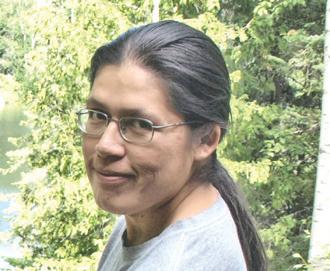

people are the same everywhere we go. We all want the same things: peace and decent lives with enough food, water and shelter for our family and friends. And we want to understand each other to minimize conflicts with other peoples.
With wars raging in Gaza and Ukraine, we need to realize there is history behind these events. Most of it has to do with lust for power, resources and domination. That lust comes from governments, corporations and the extremely wealthy few who never send their children to fight in wars.
I know from experience that we all want peace, to provide for our families
and friends and to care for our planet. We hope future generations can live and thrive without conflict, in healthy environments of clean air and water.
Look deeper into the conflicts we are involved in. Look at the history of the governments involved. If you can manage it, make friends from different cultures to understand that we really are all the same.
Don’t wait for retirement to travel when your brain is slower and your muscles weaker. Do it as soon as you can. Get out there while you are young. Time keeps on slipping.
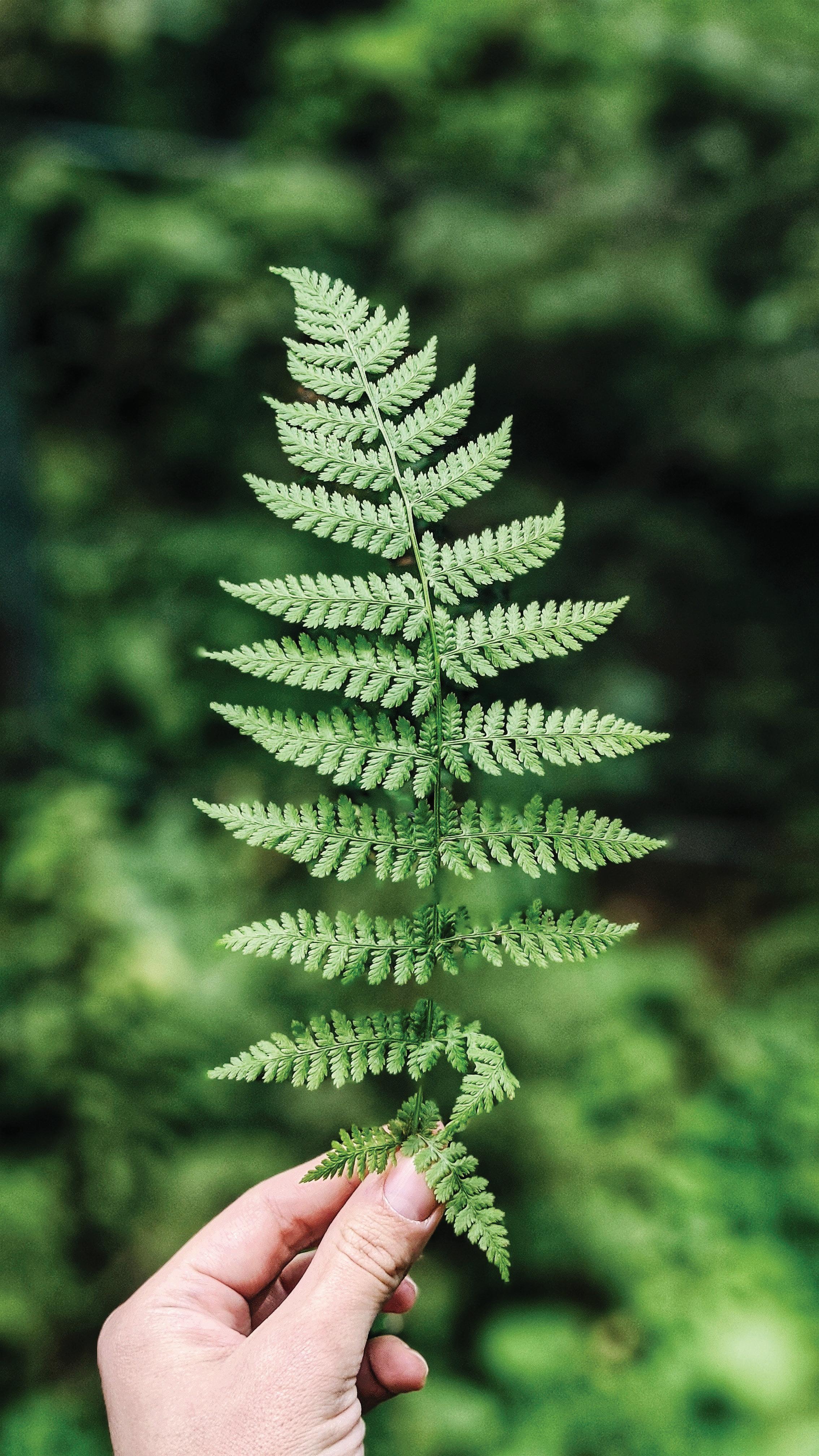
We offer discounted rates and seat sales.
For information, reser vations, or charters call: 1-800-567-6567or visit: www.aircreebec.ca Your Northern Airline of Choice
